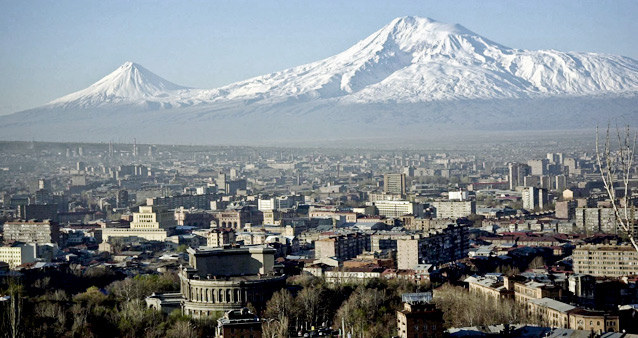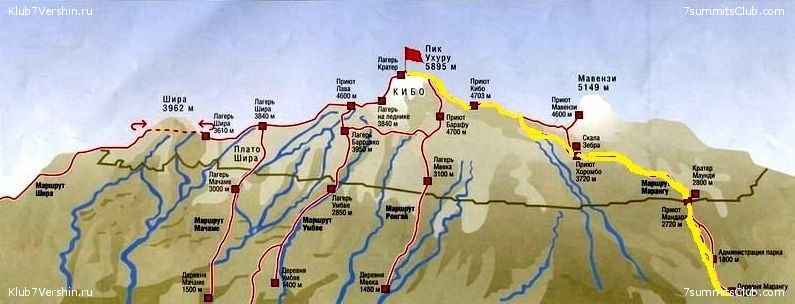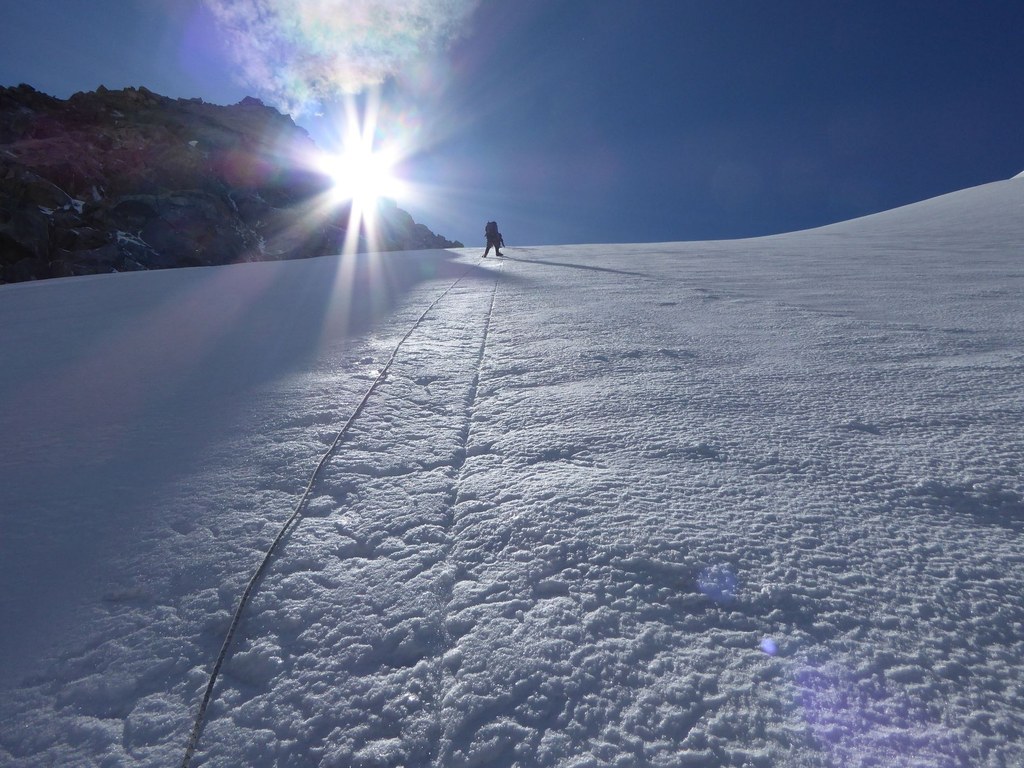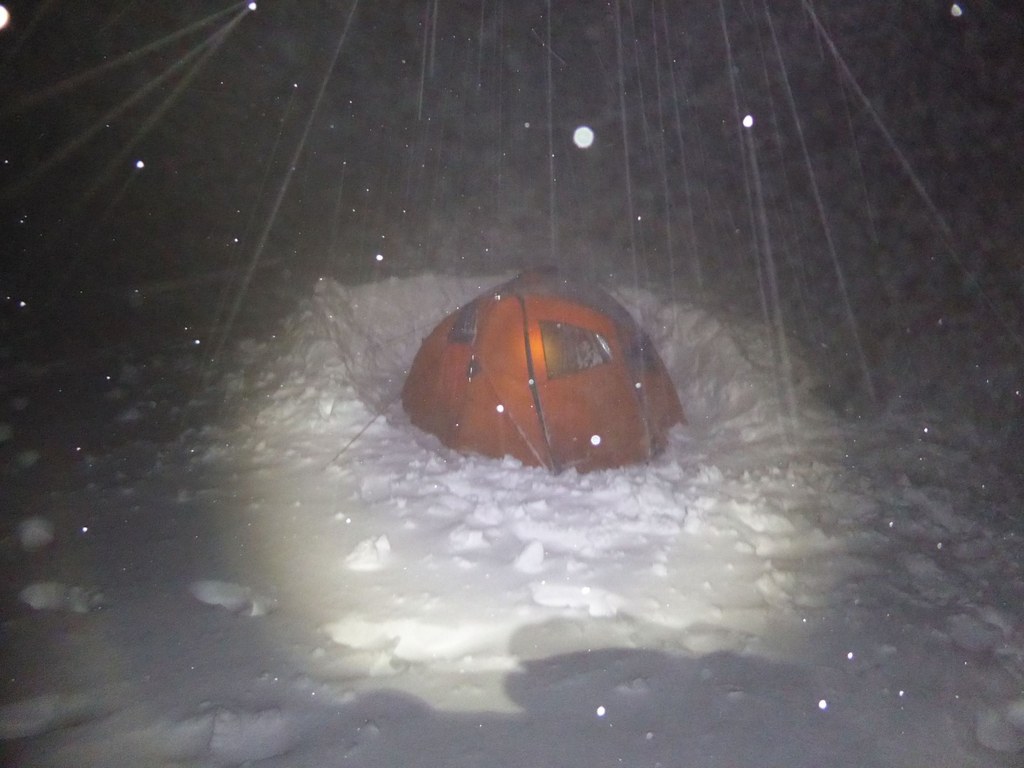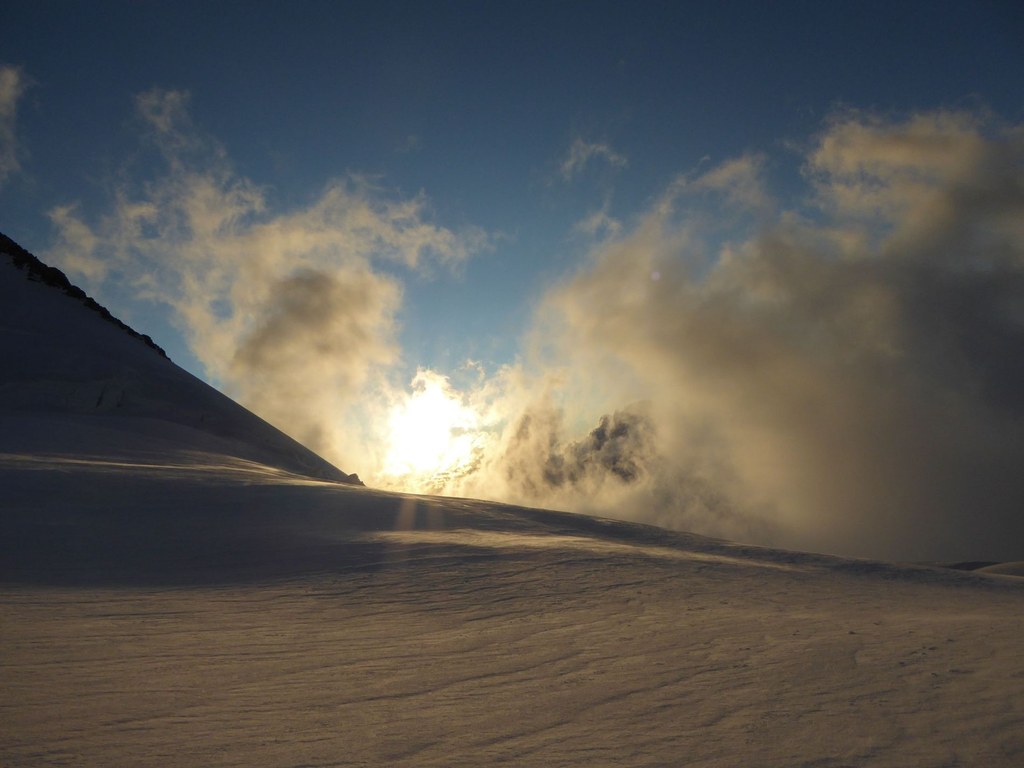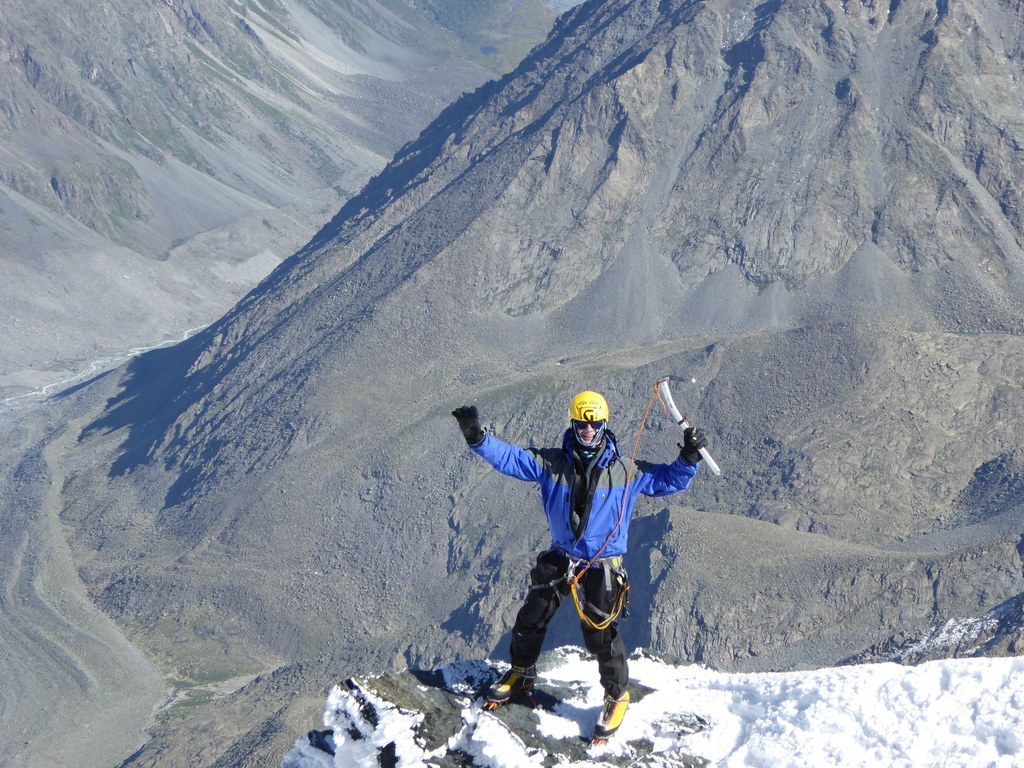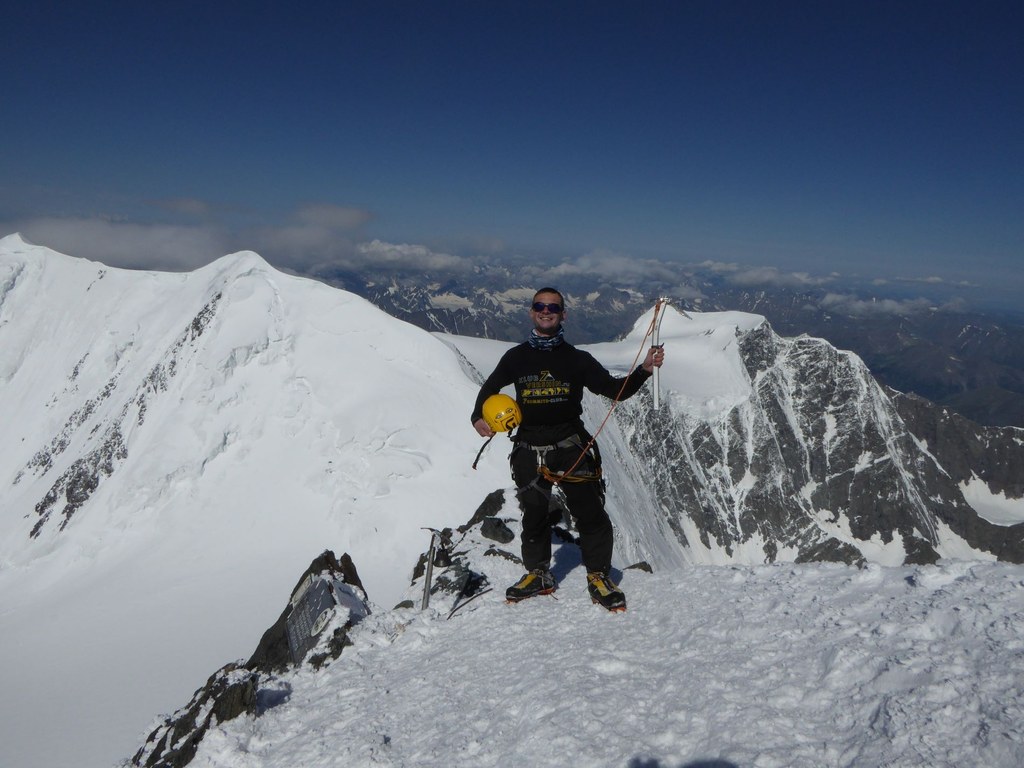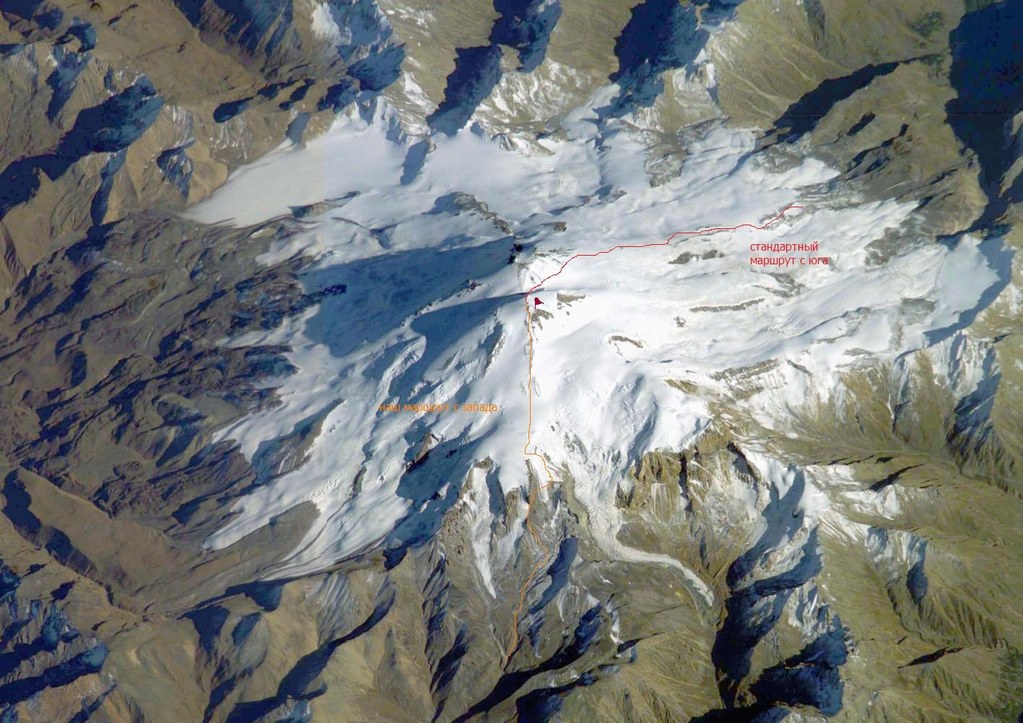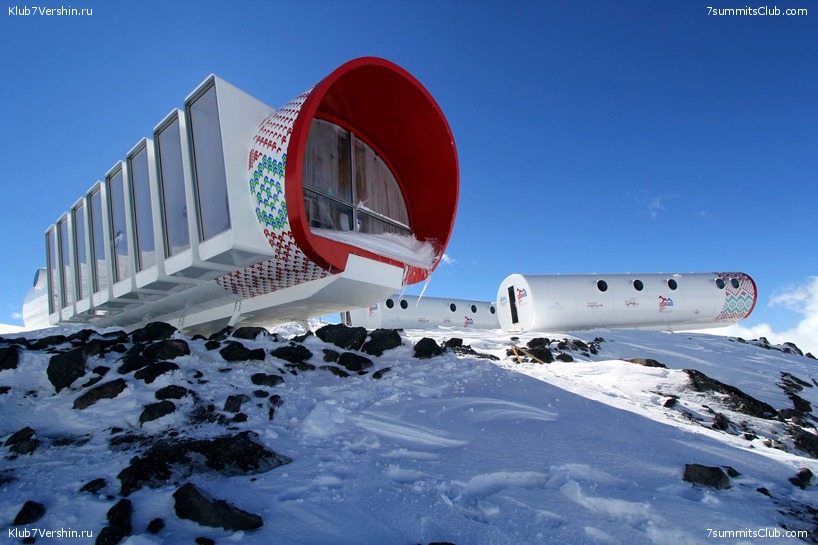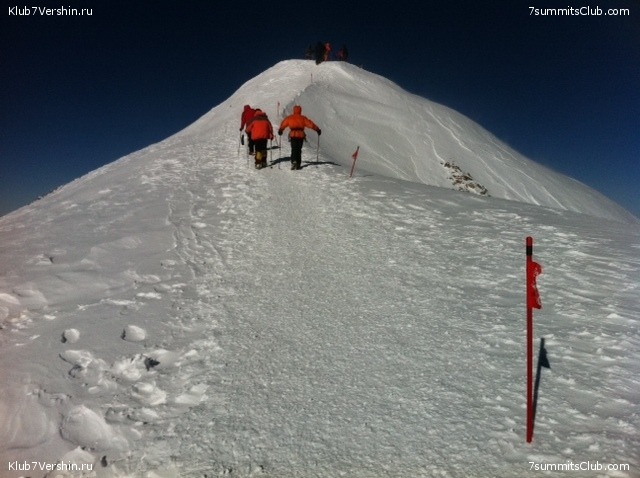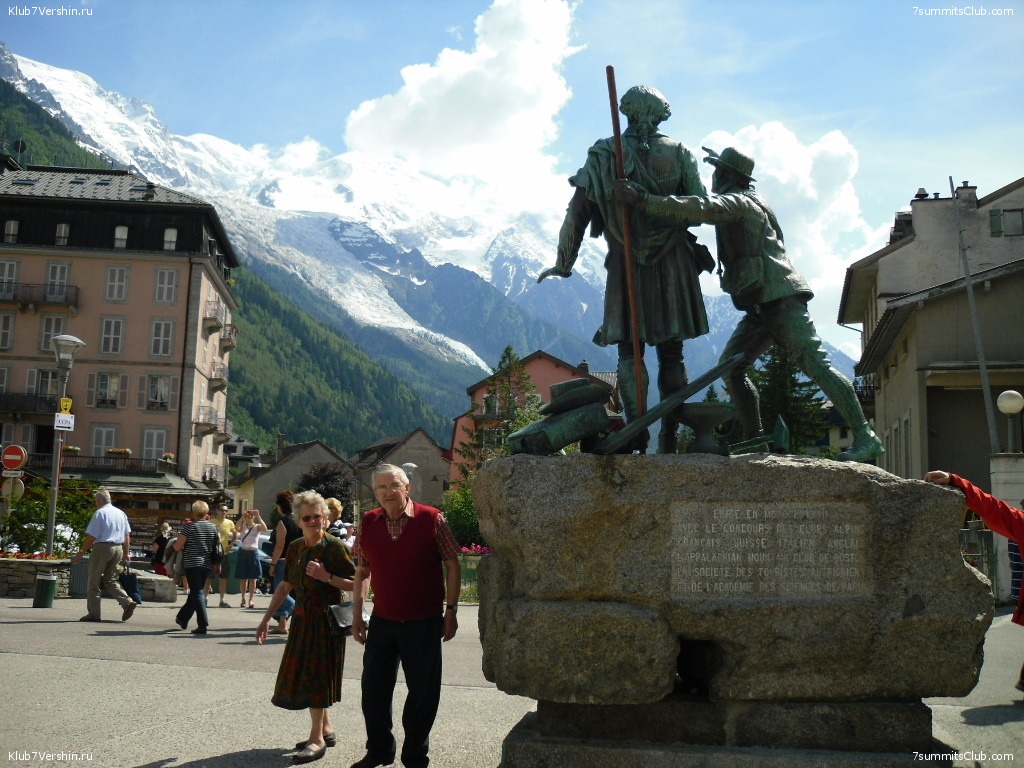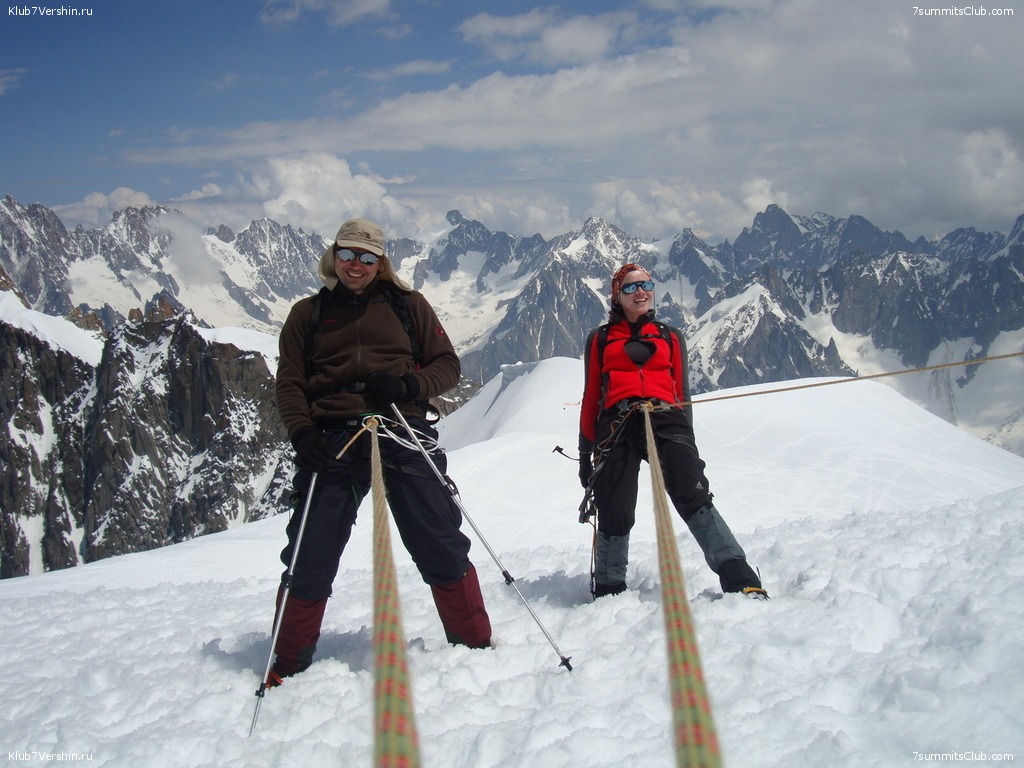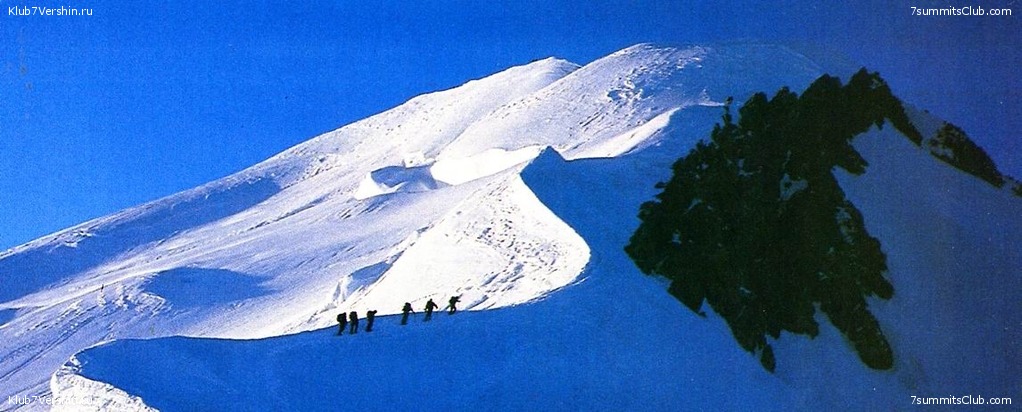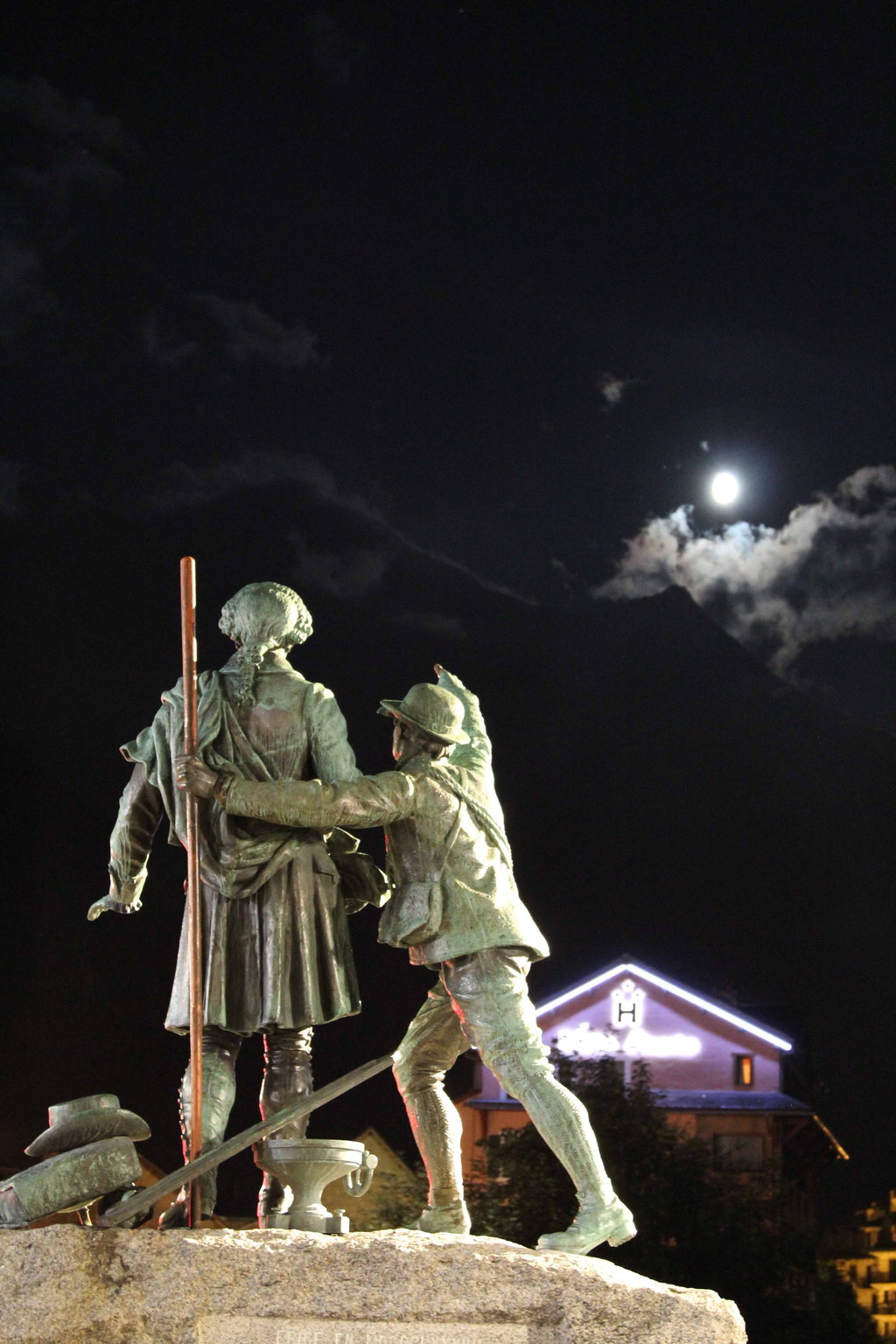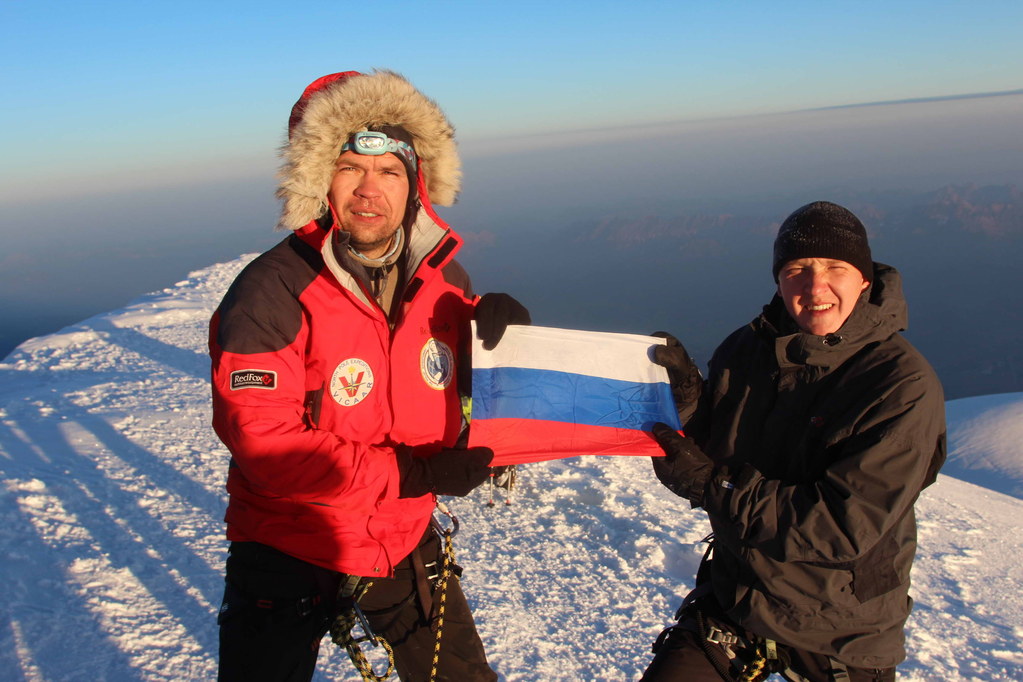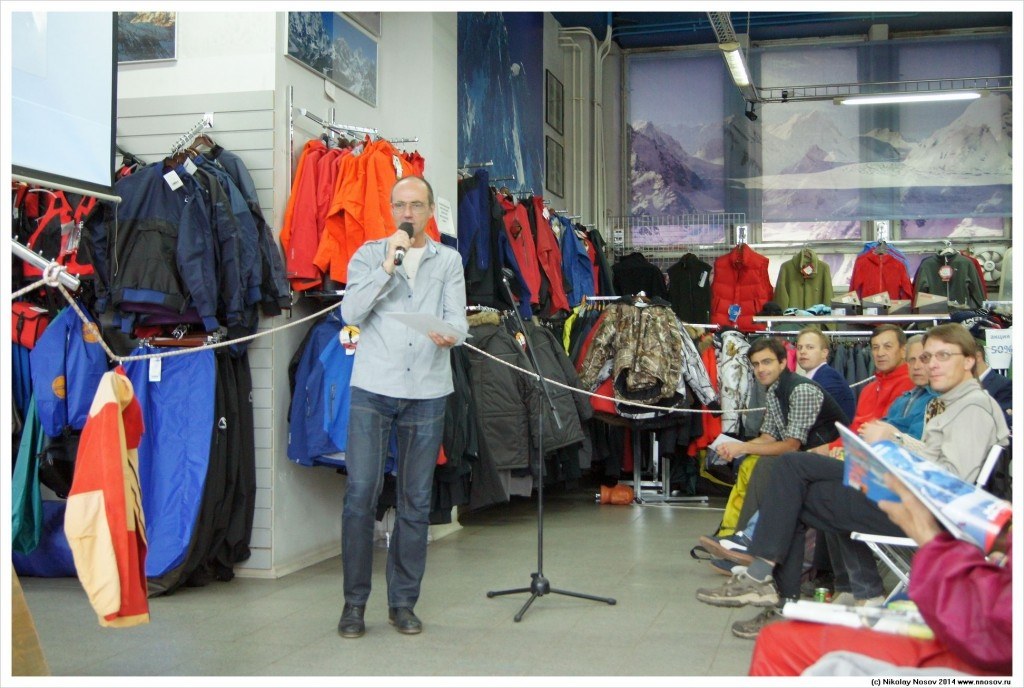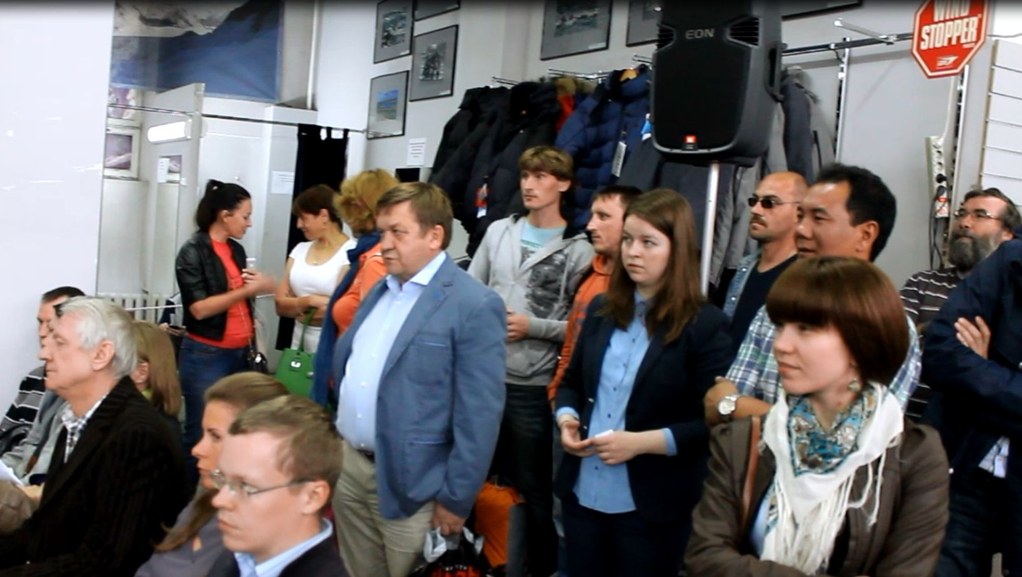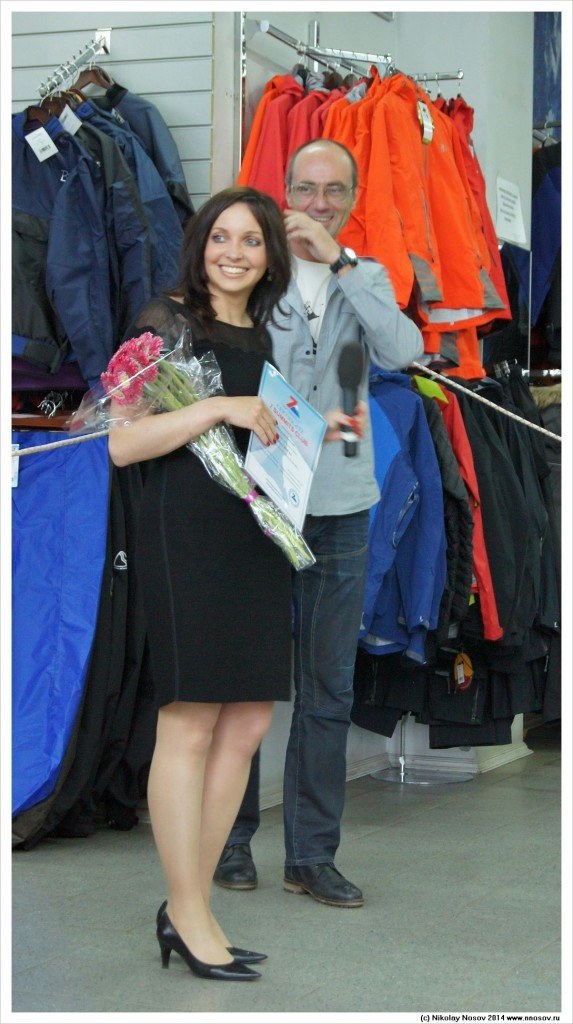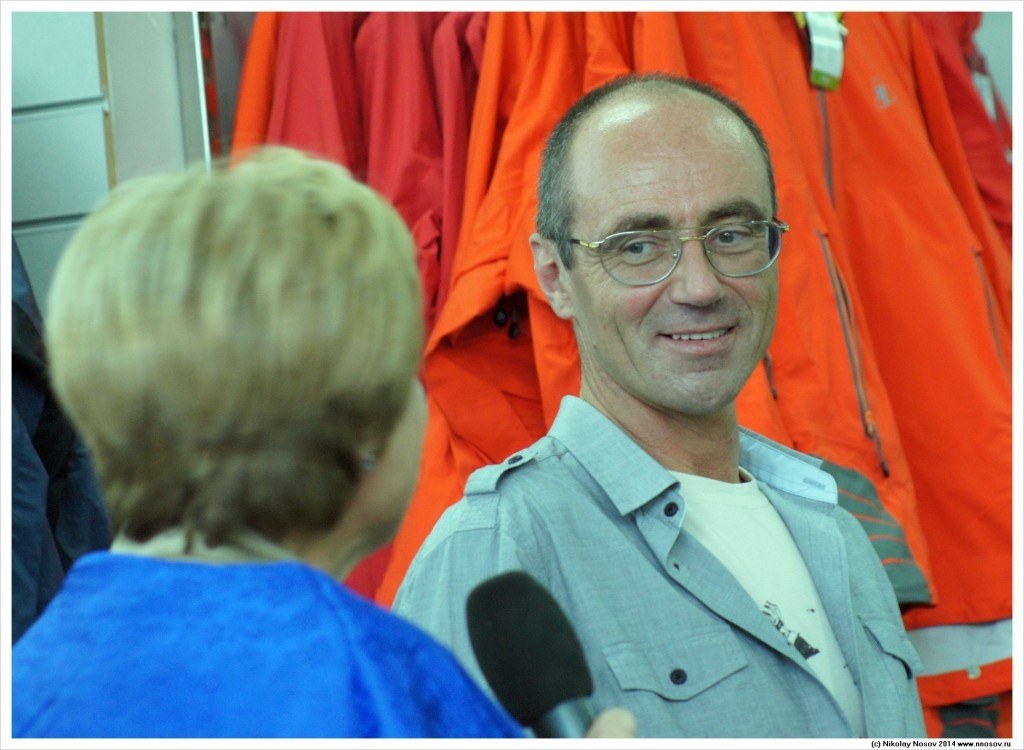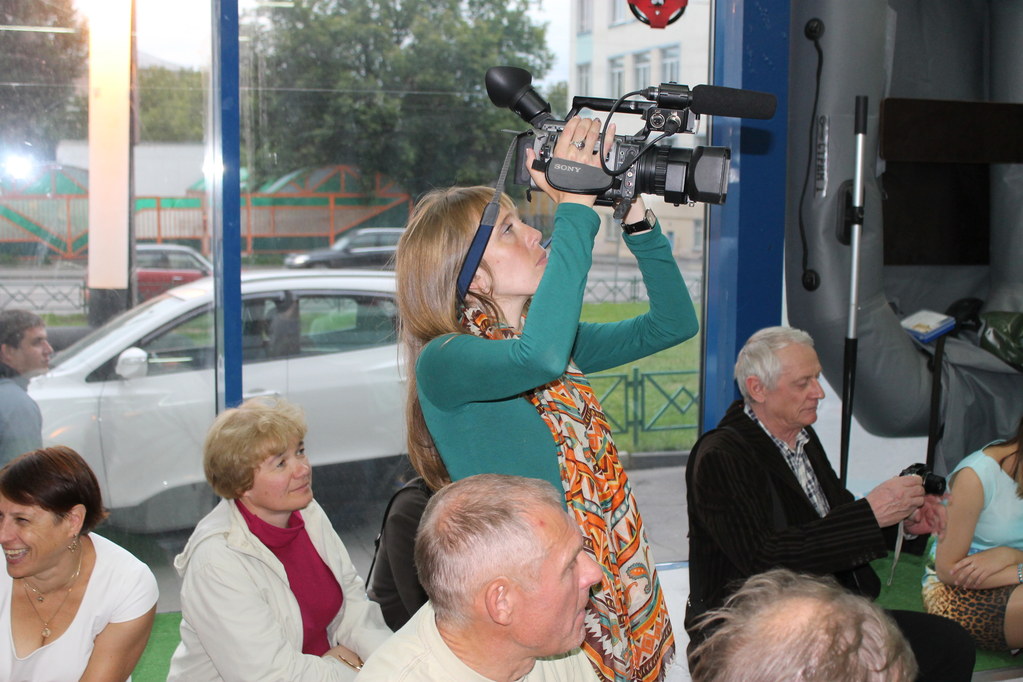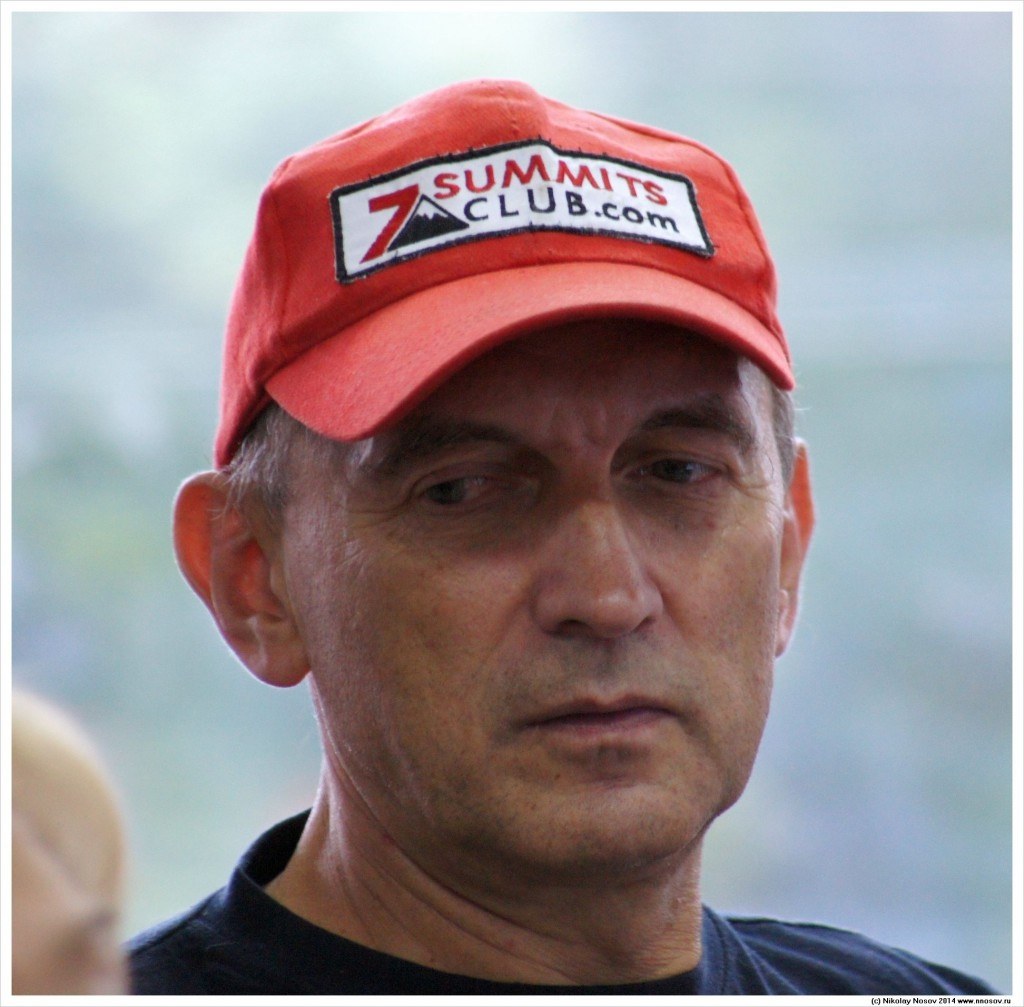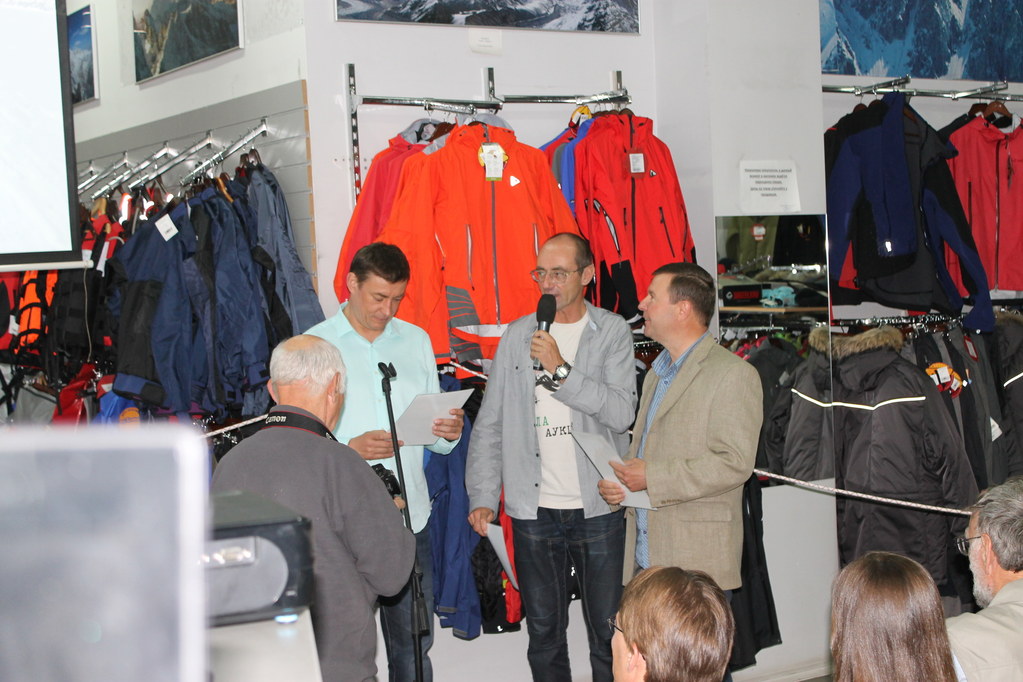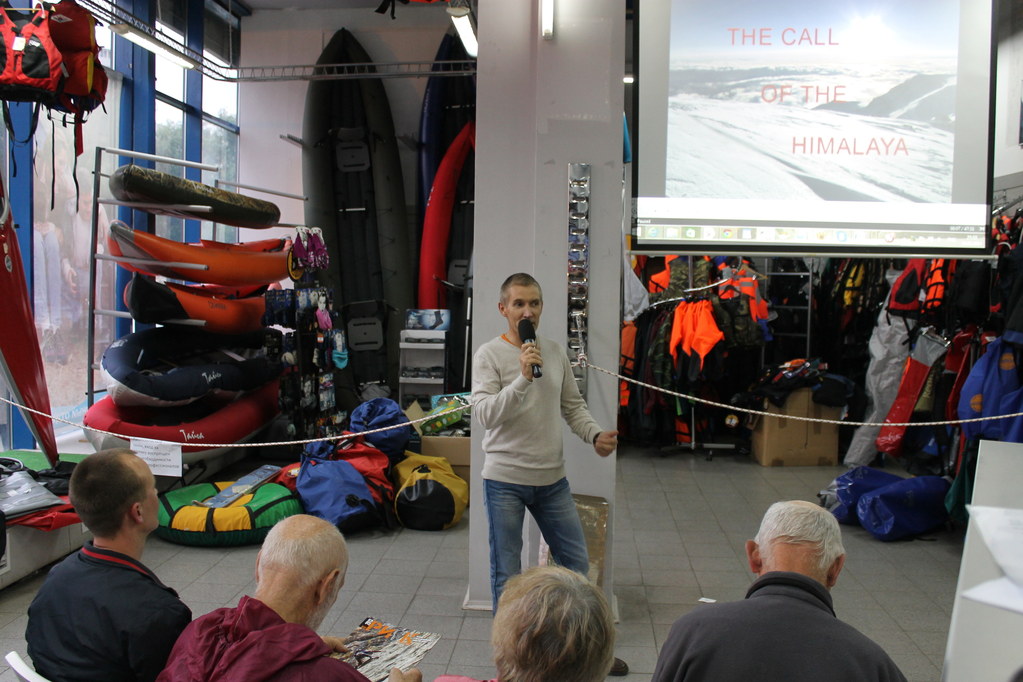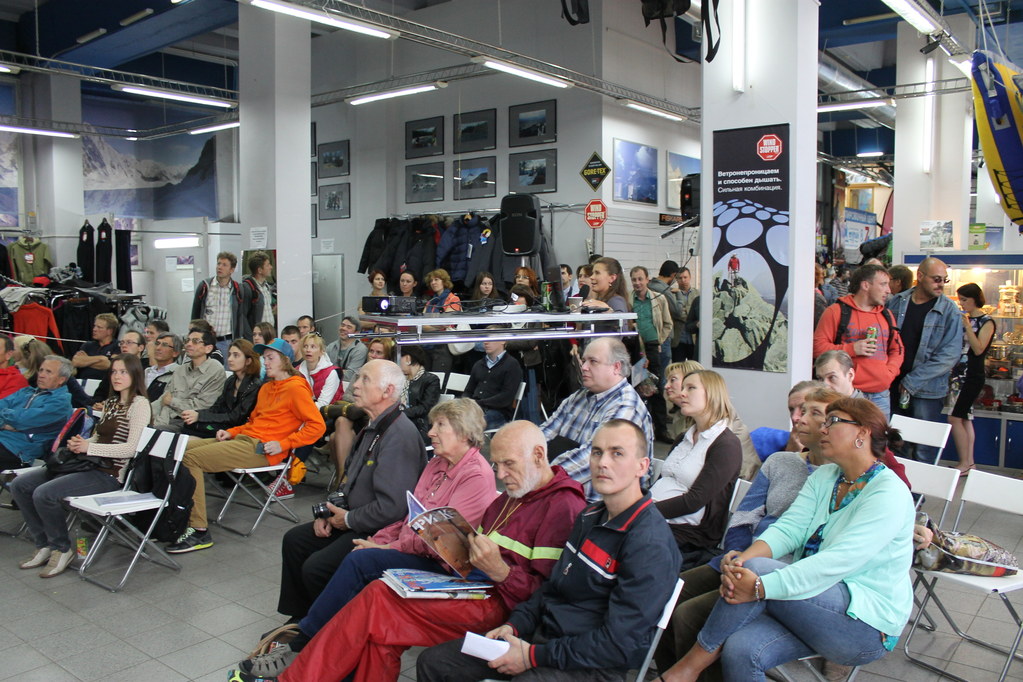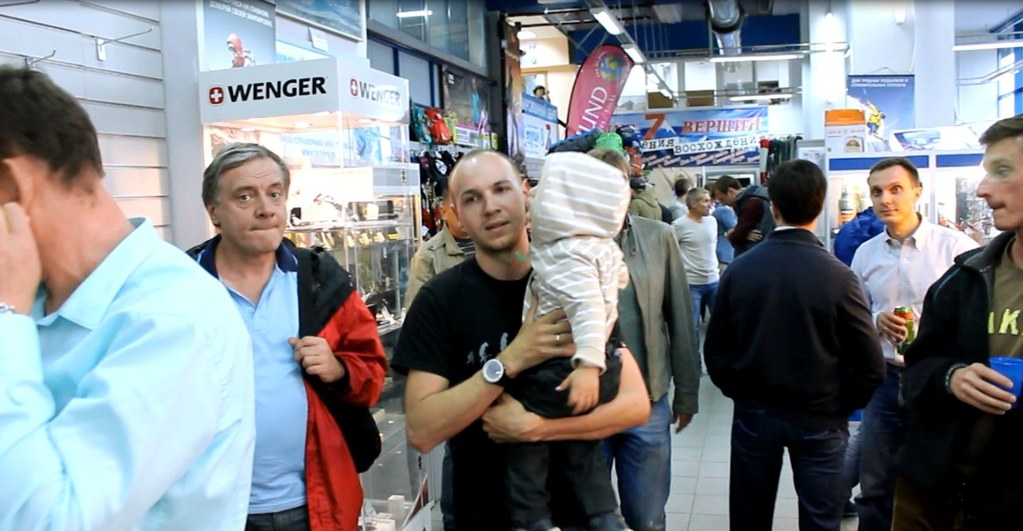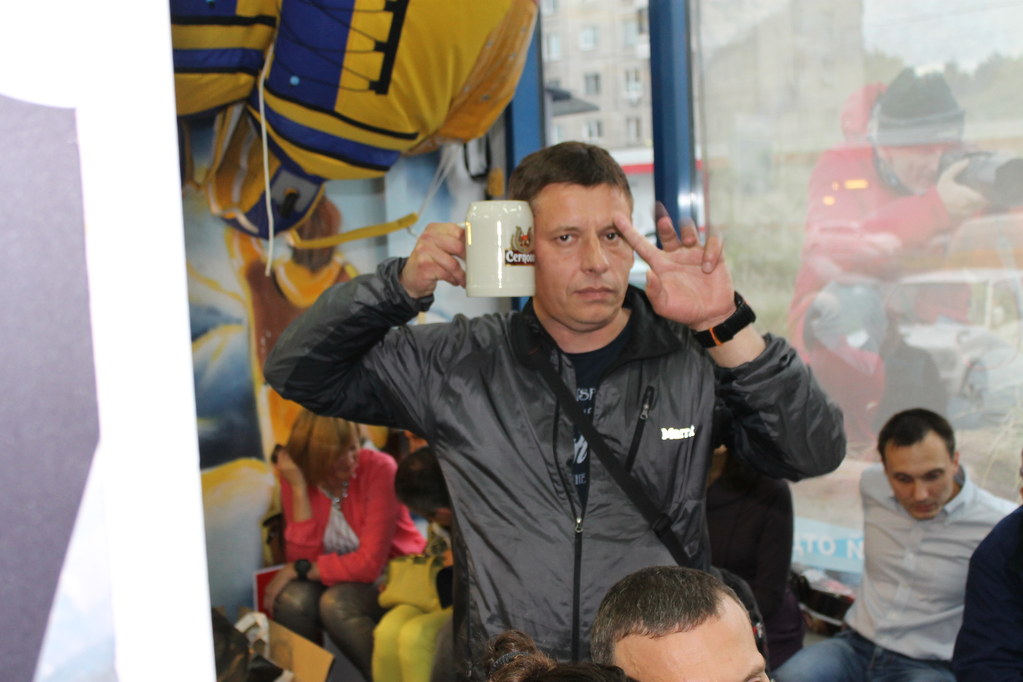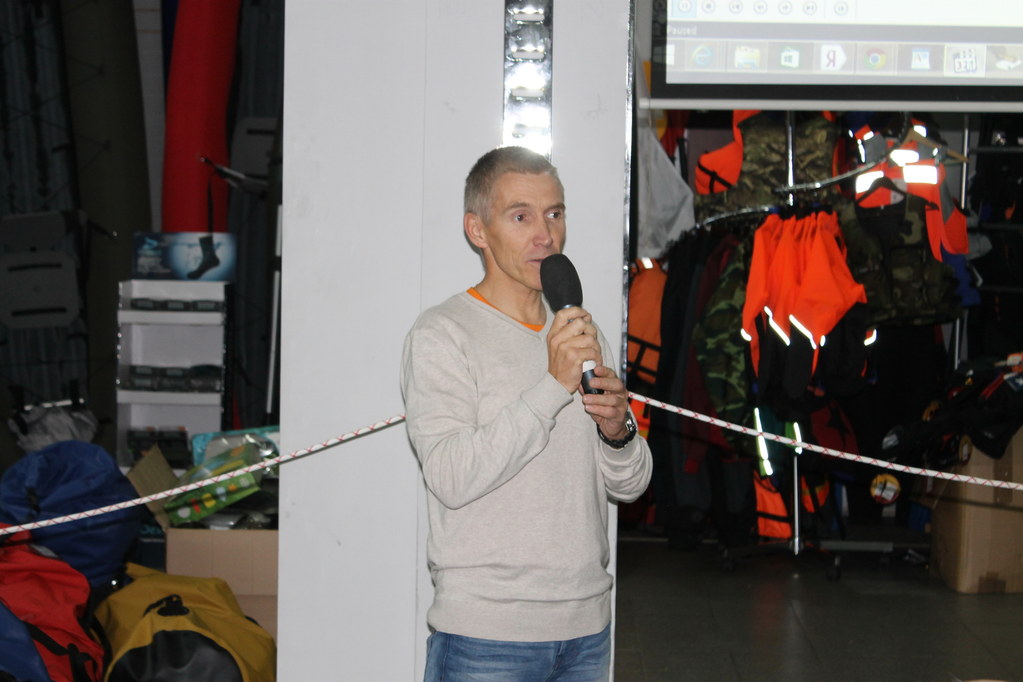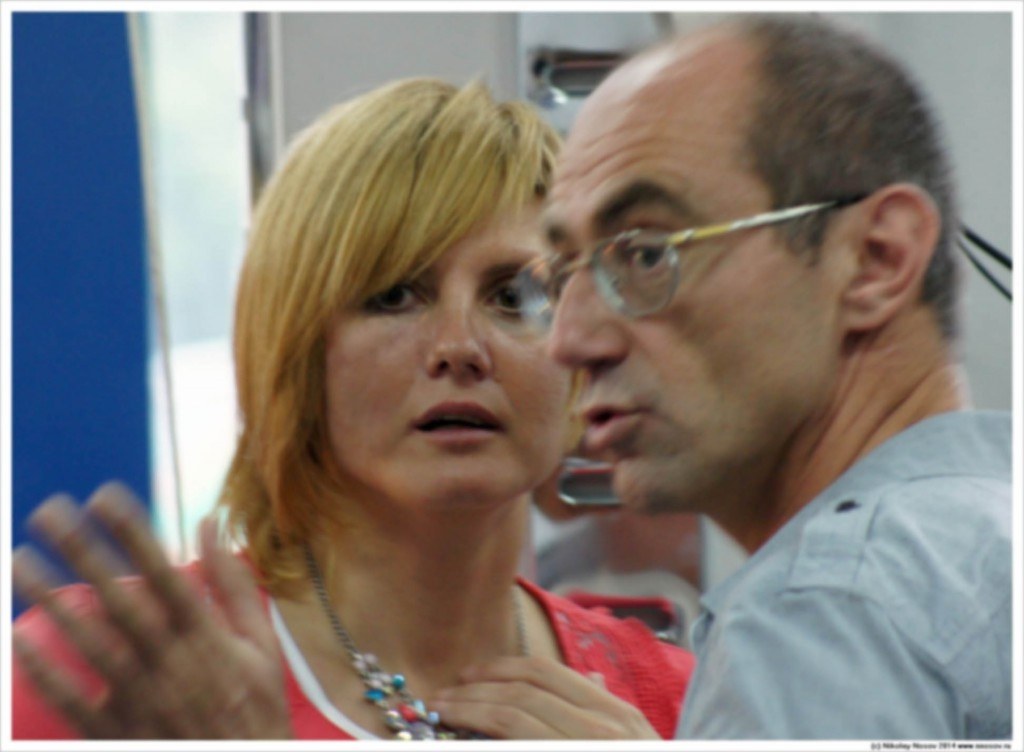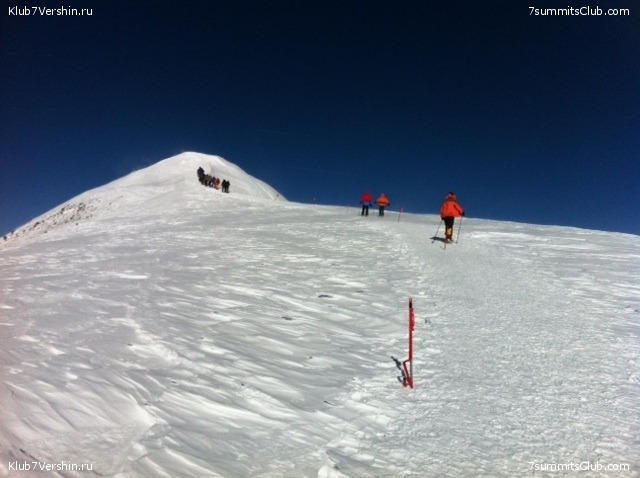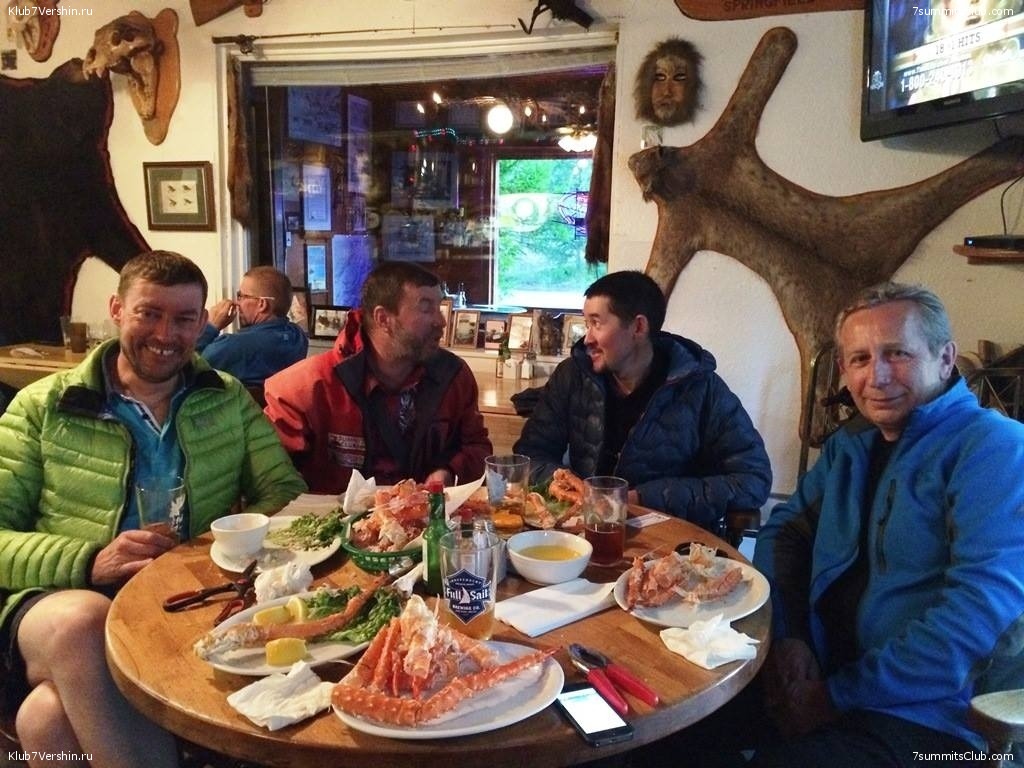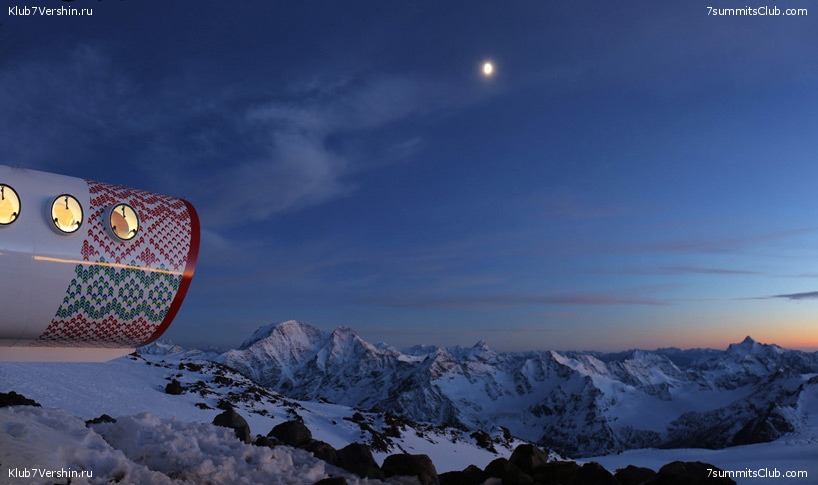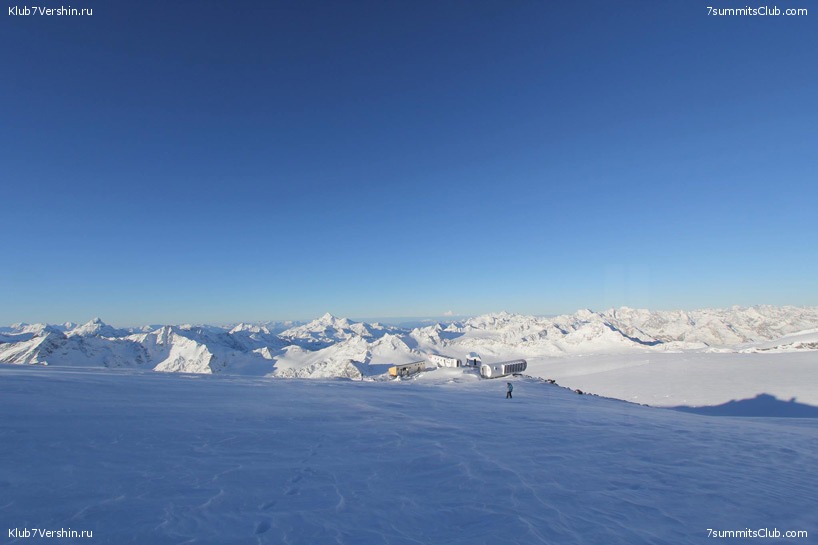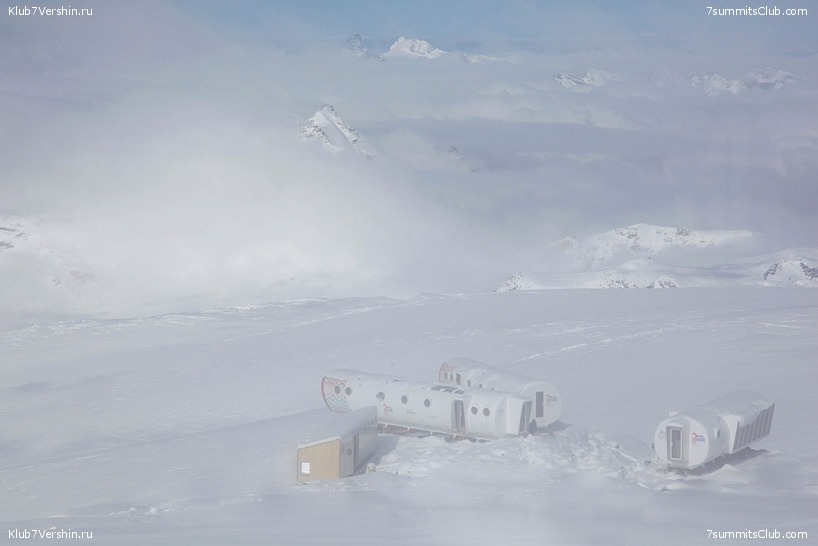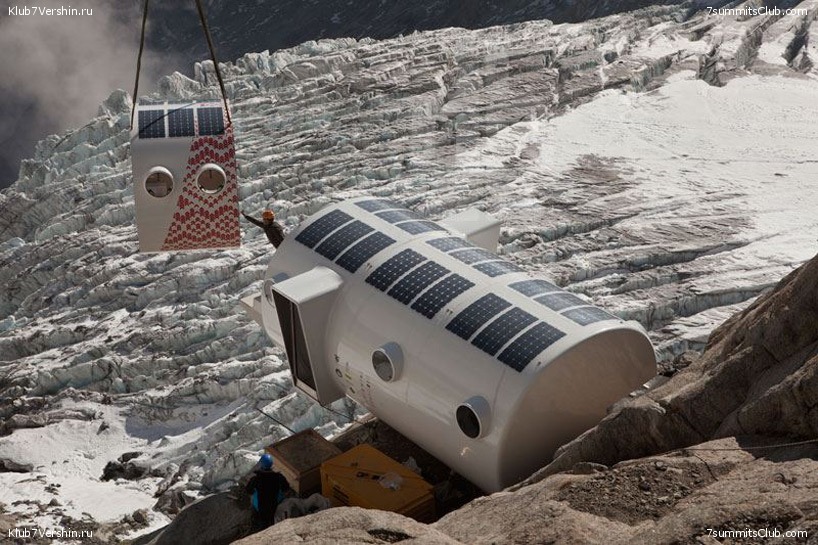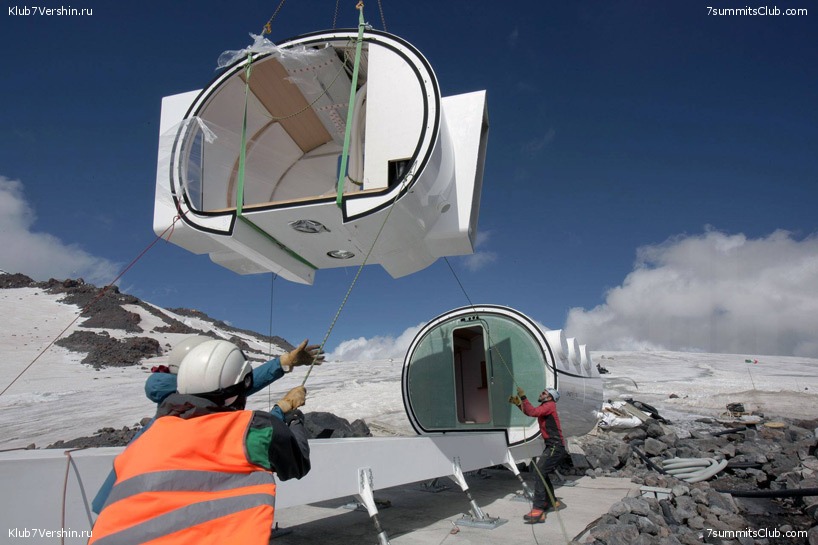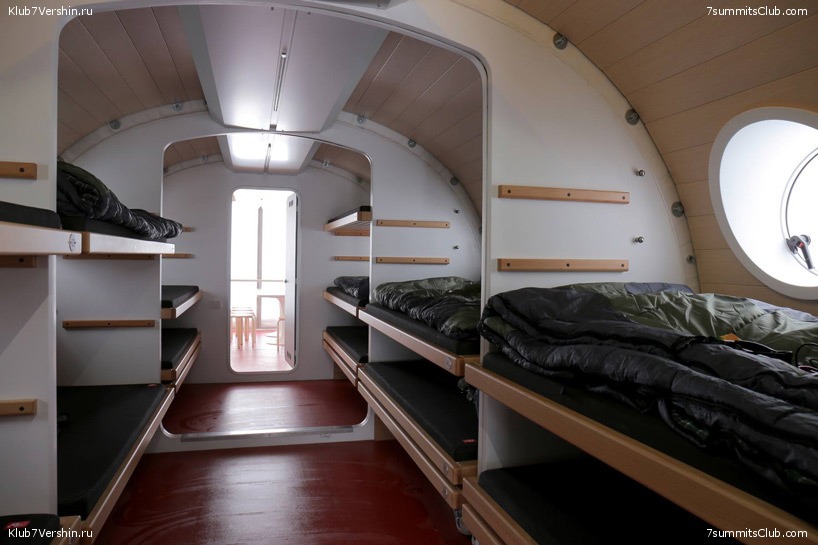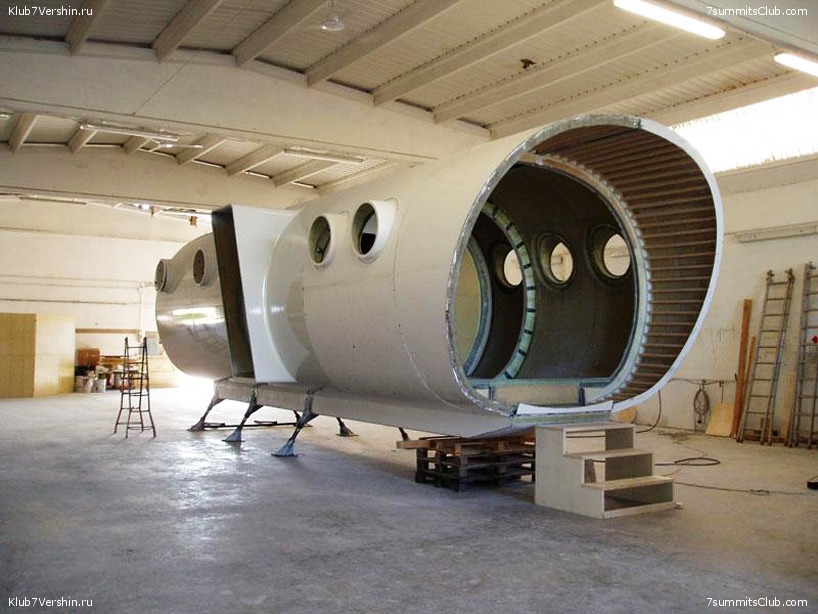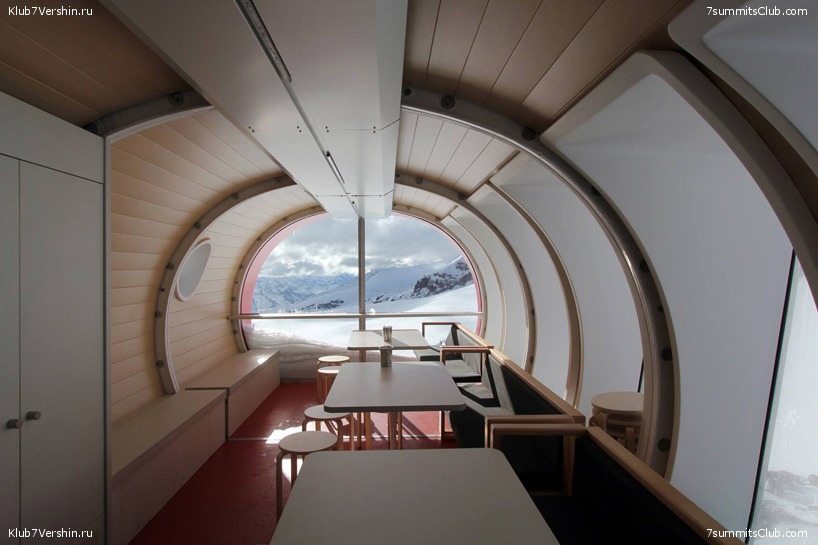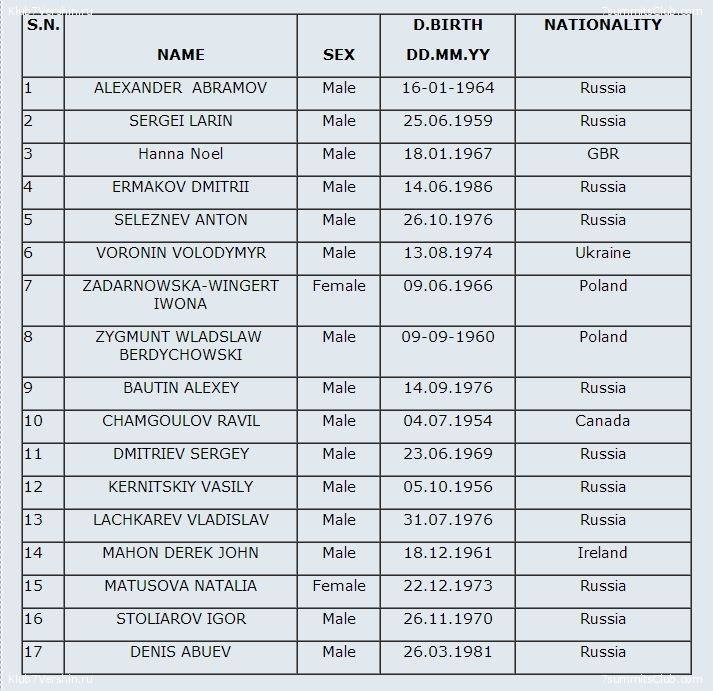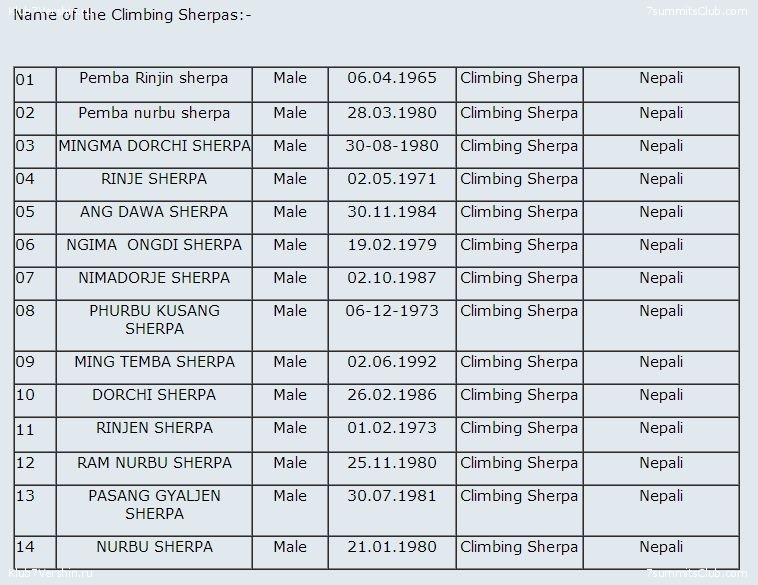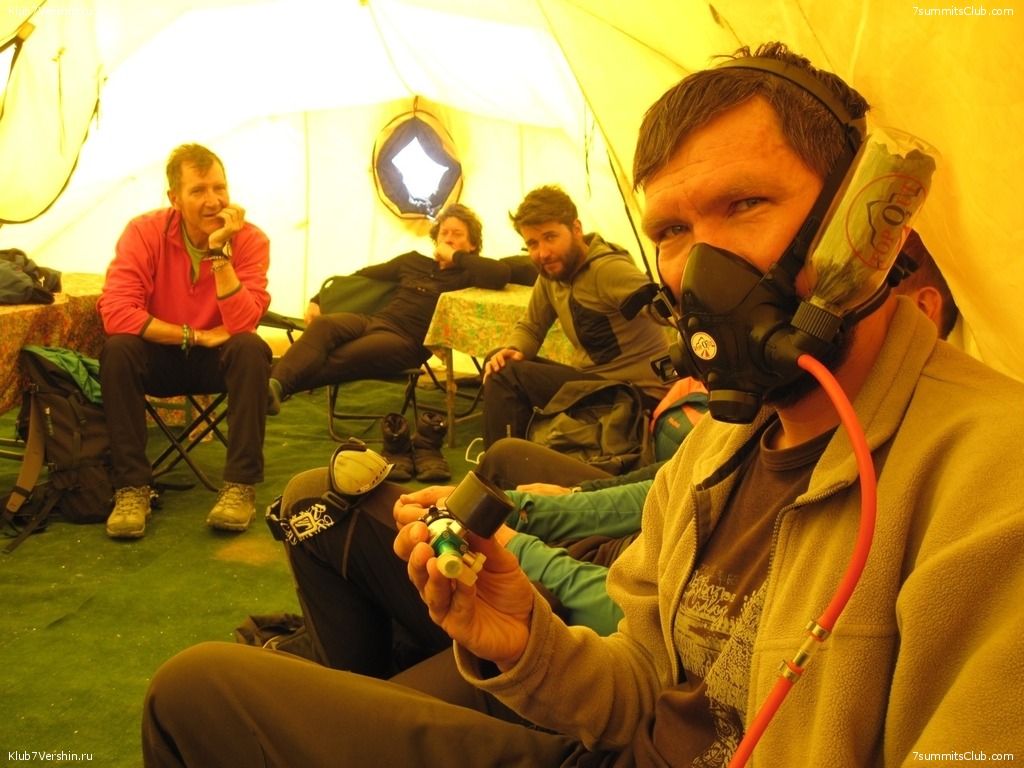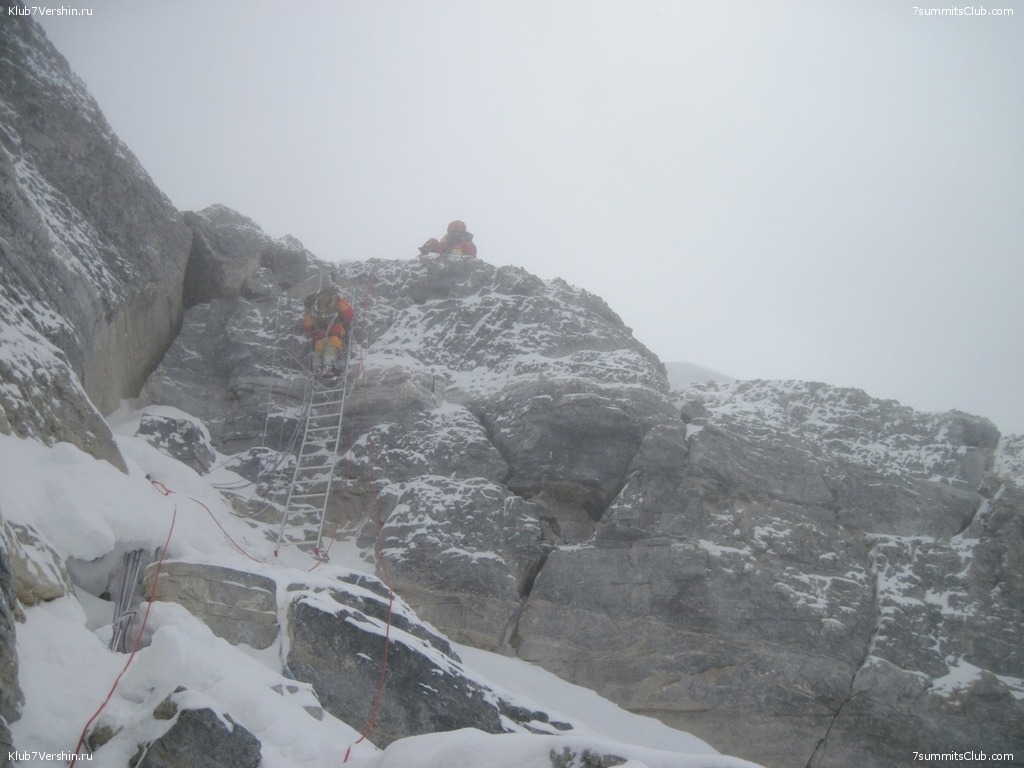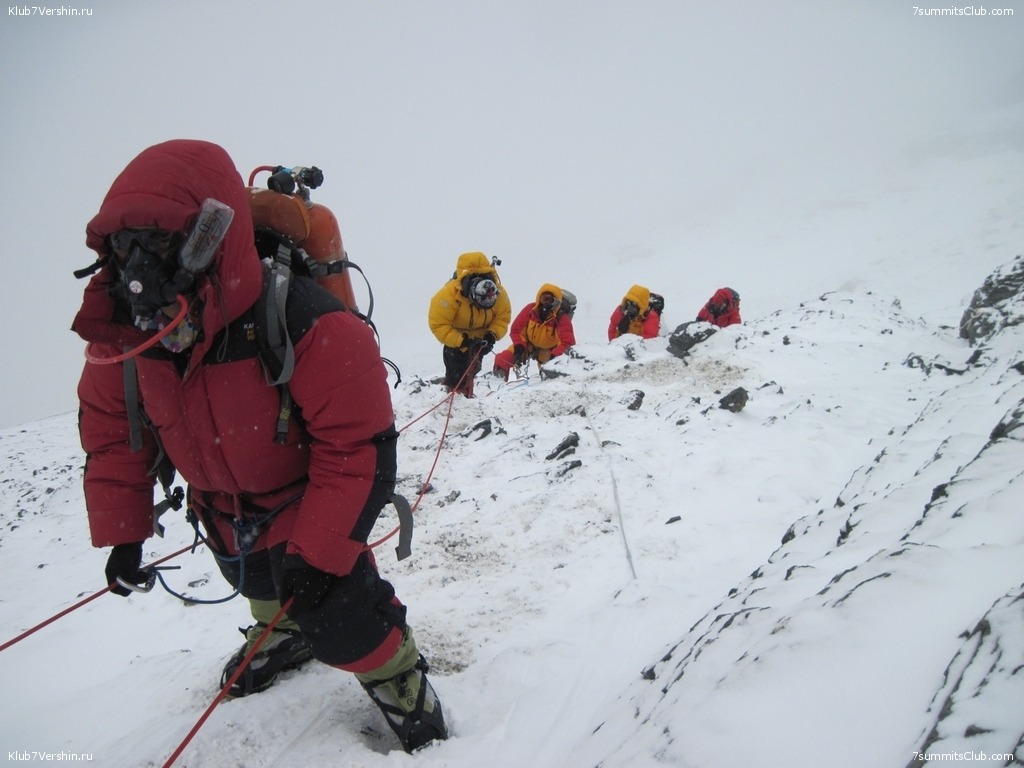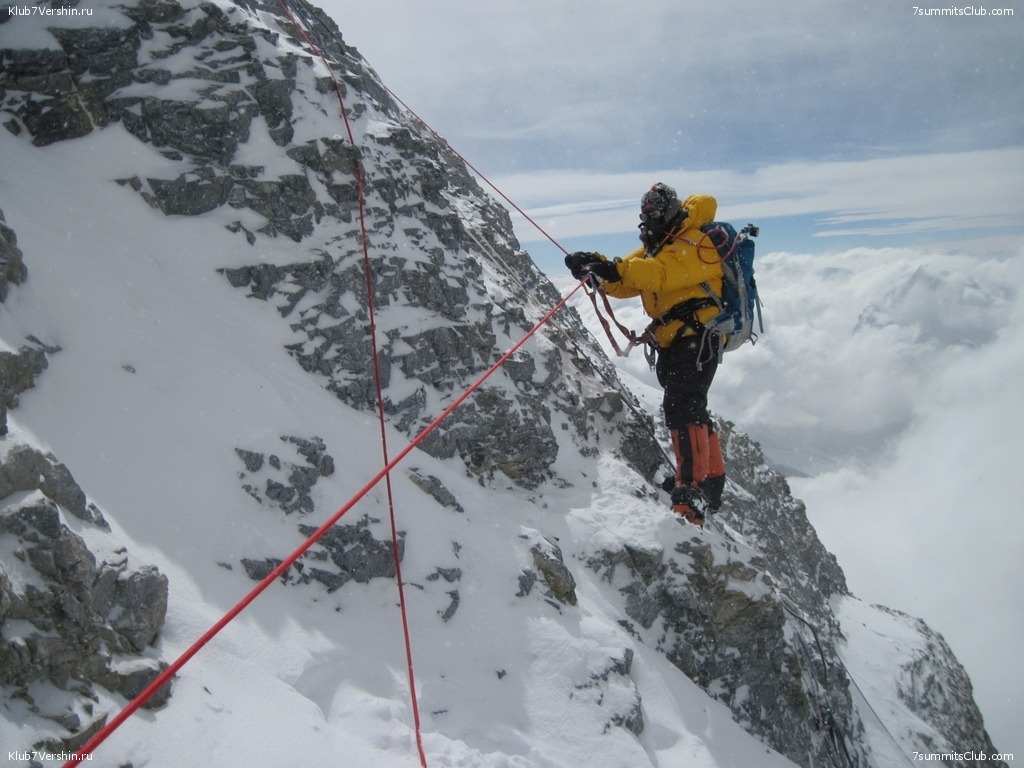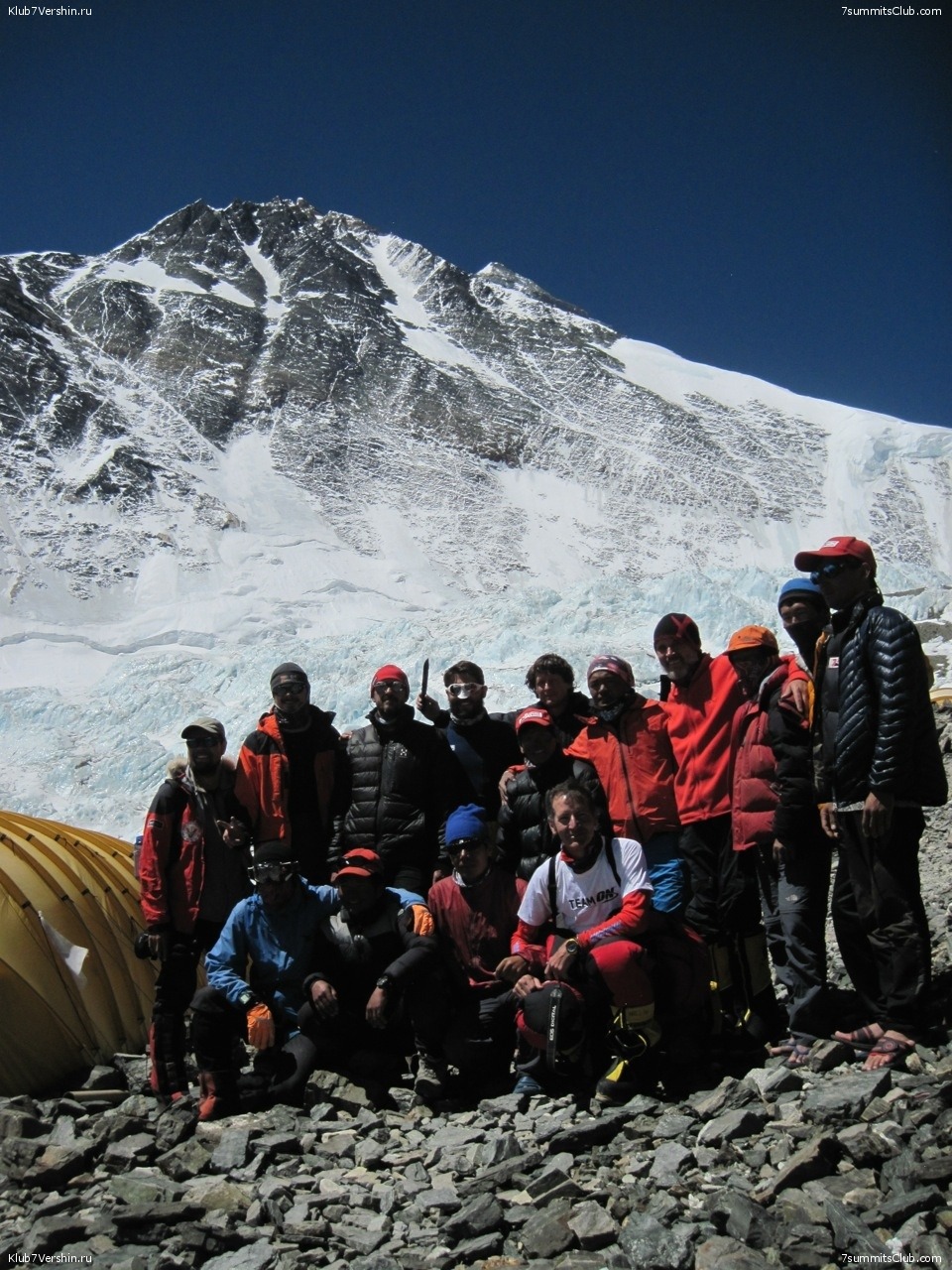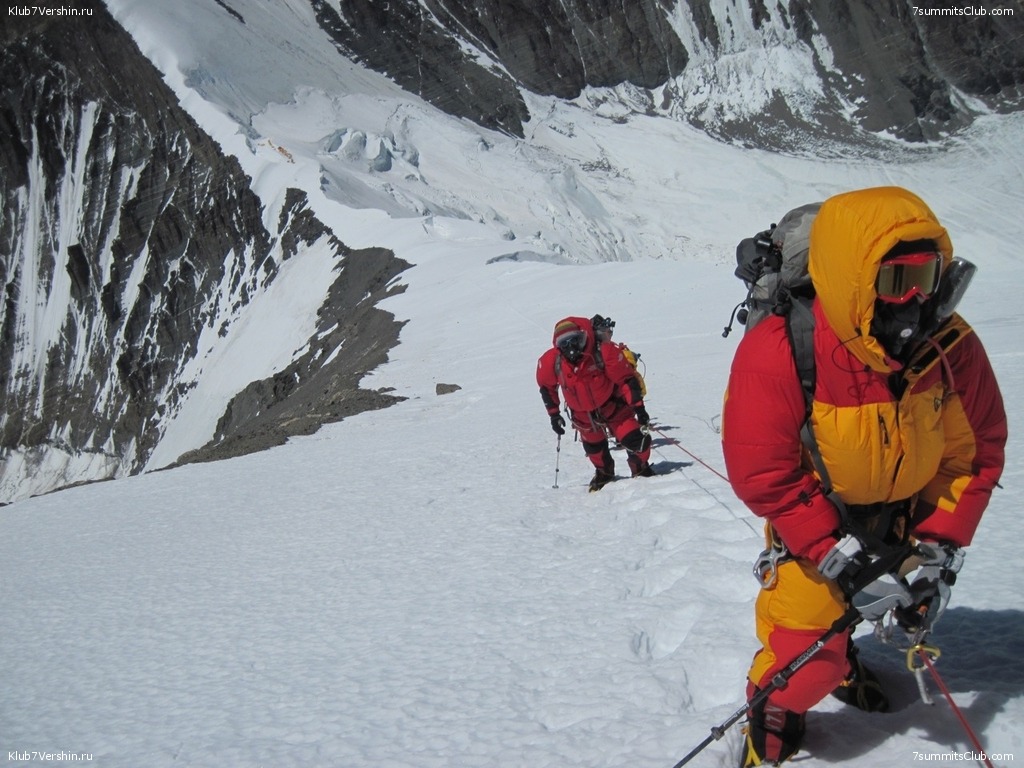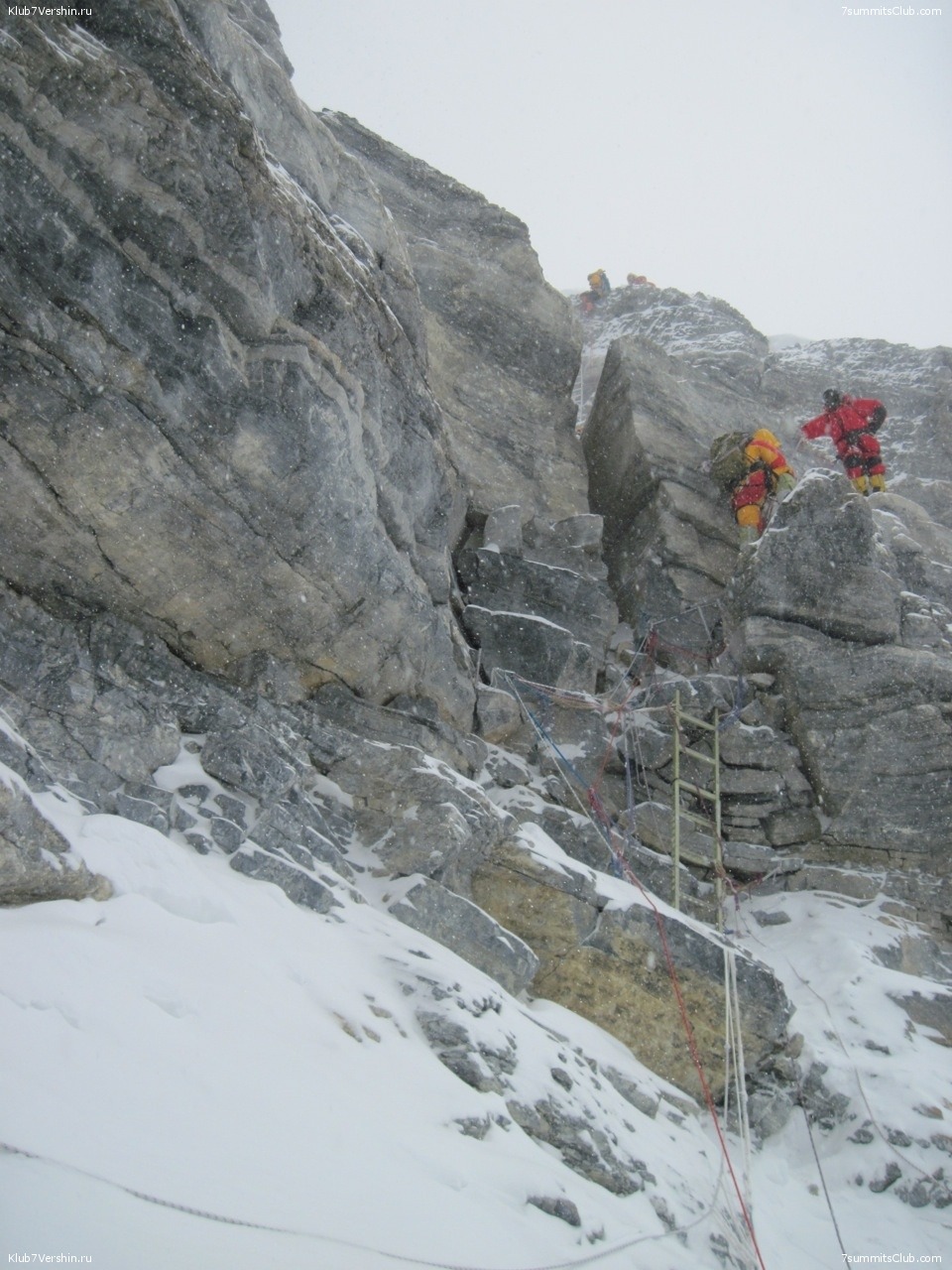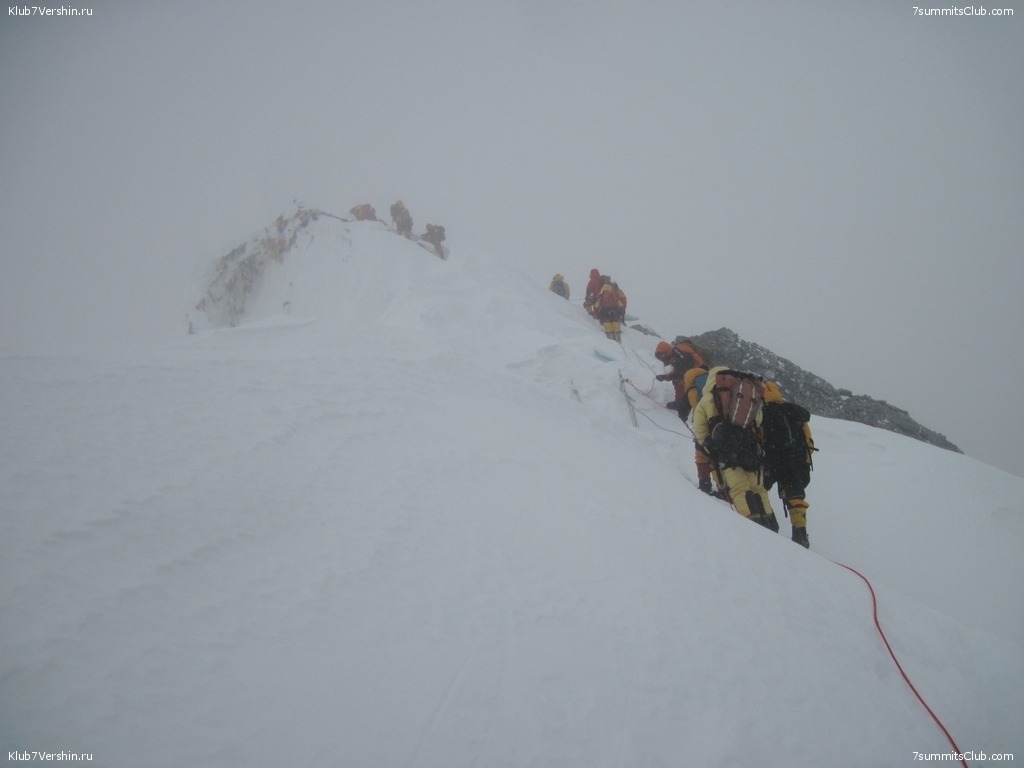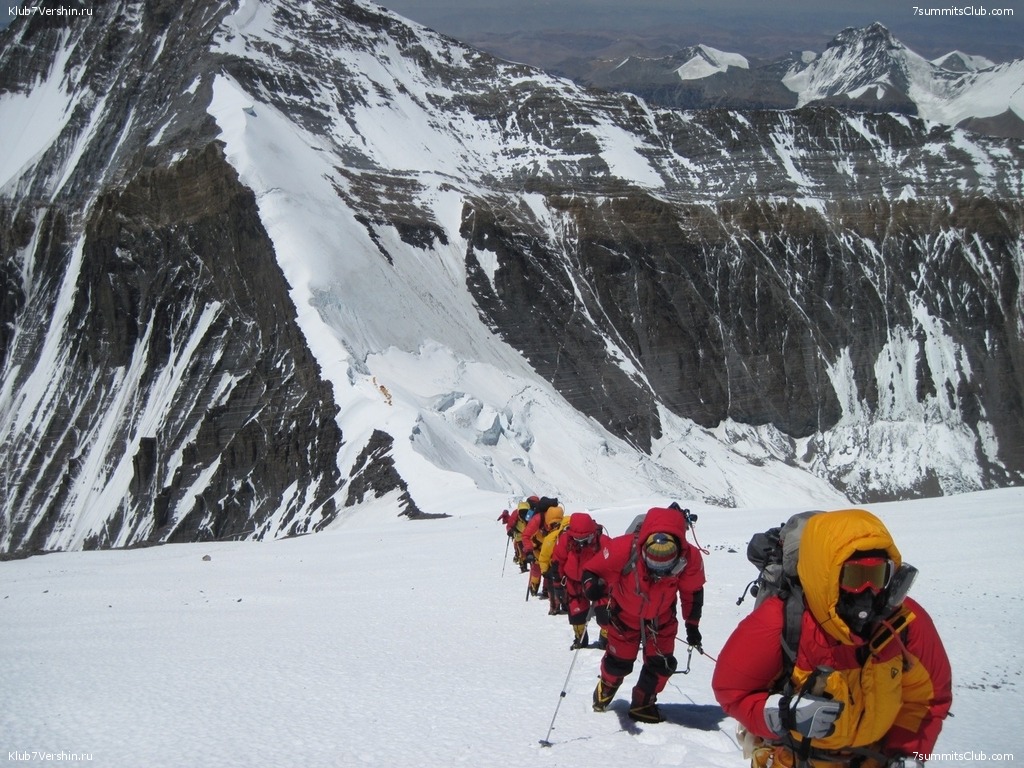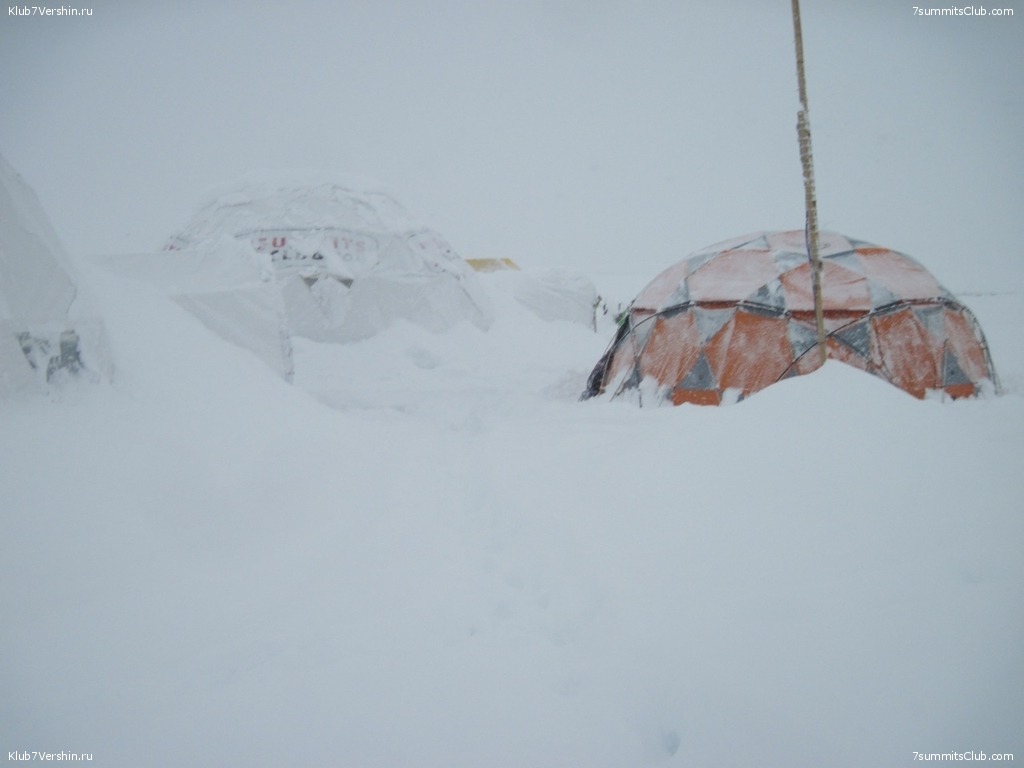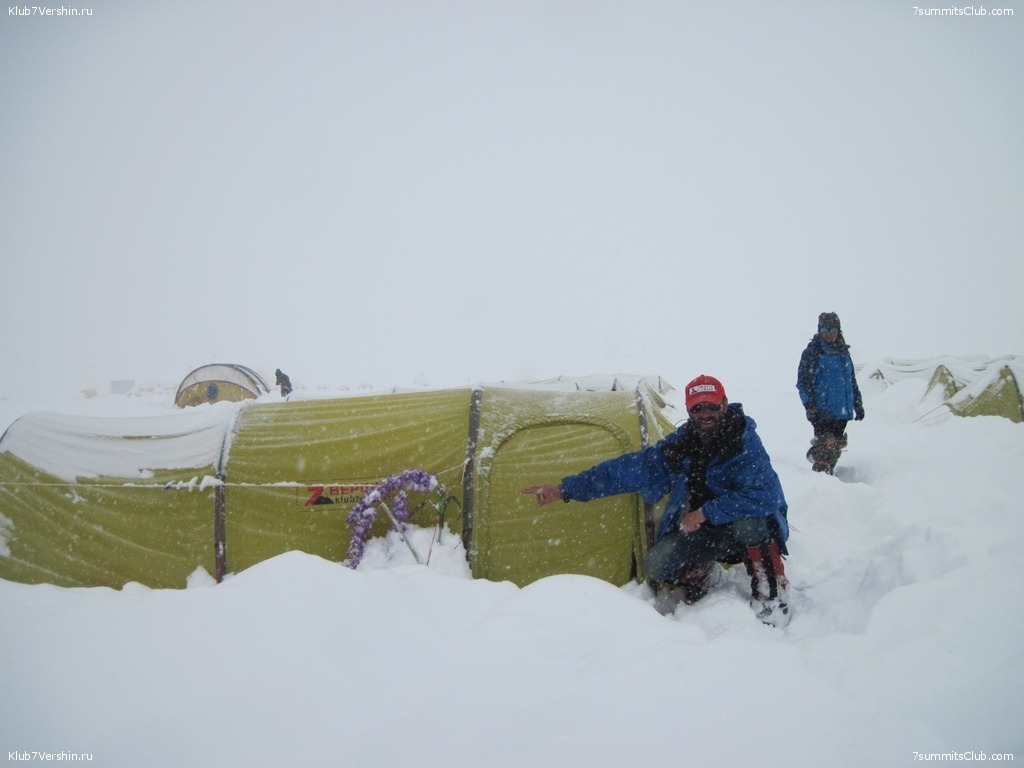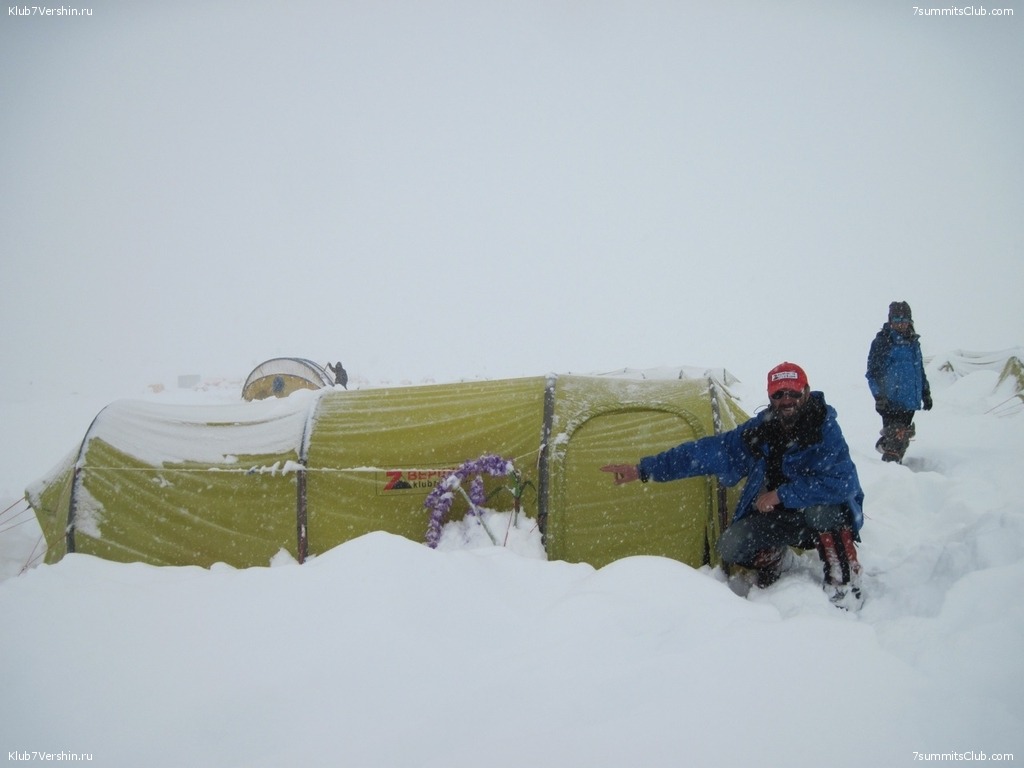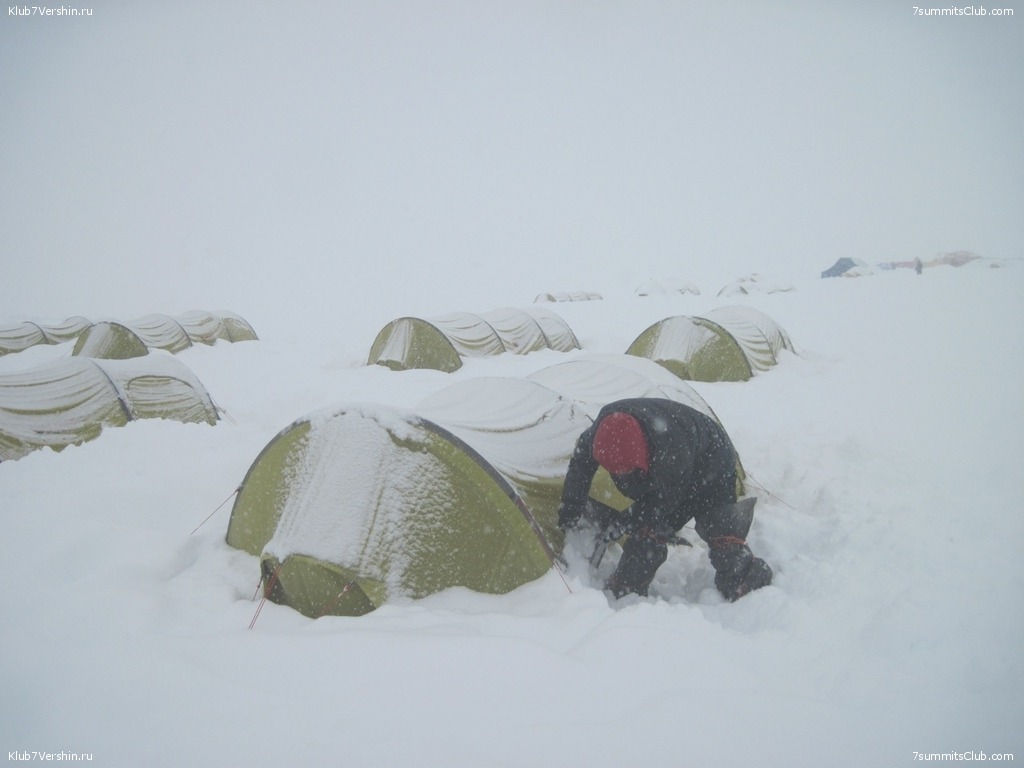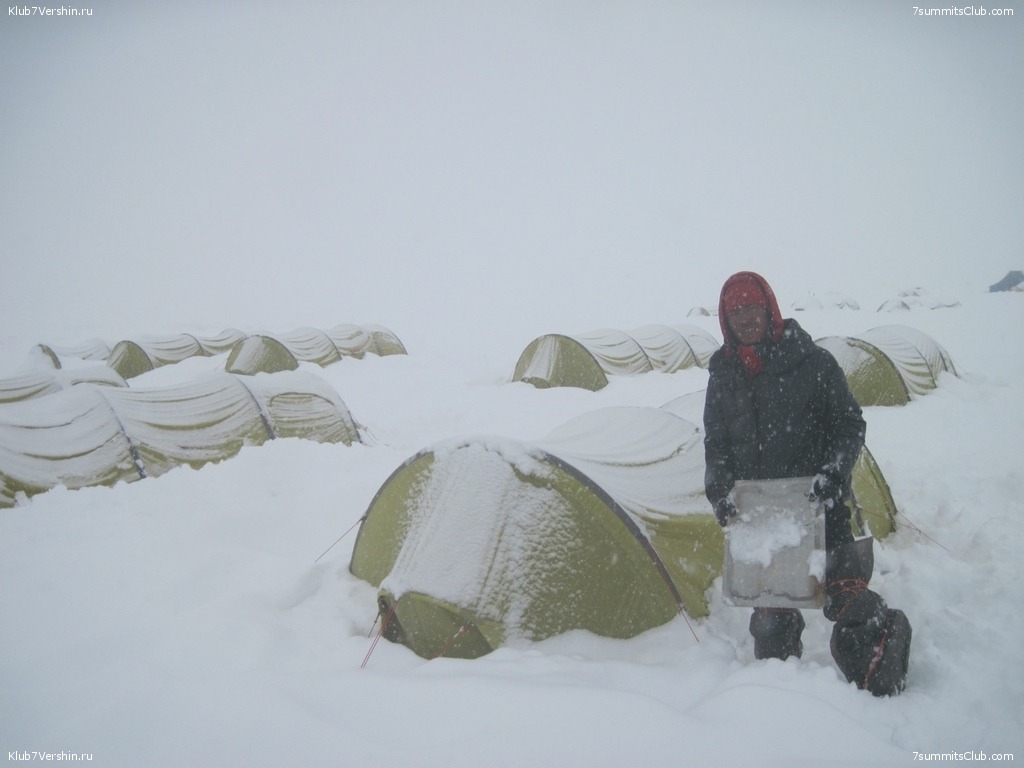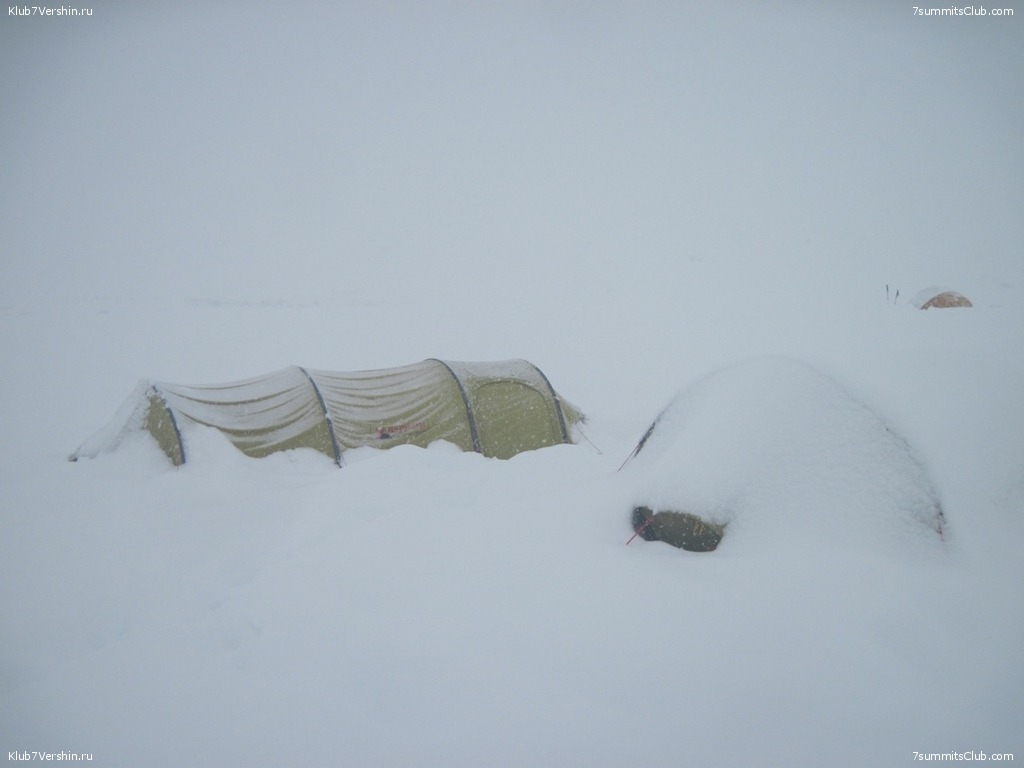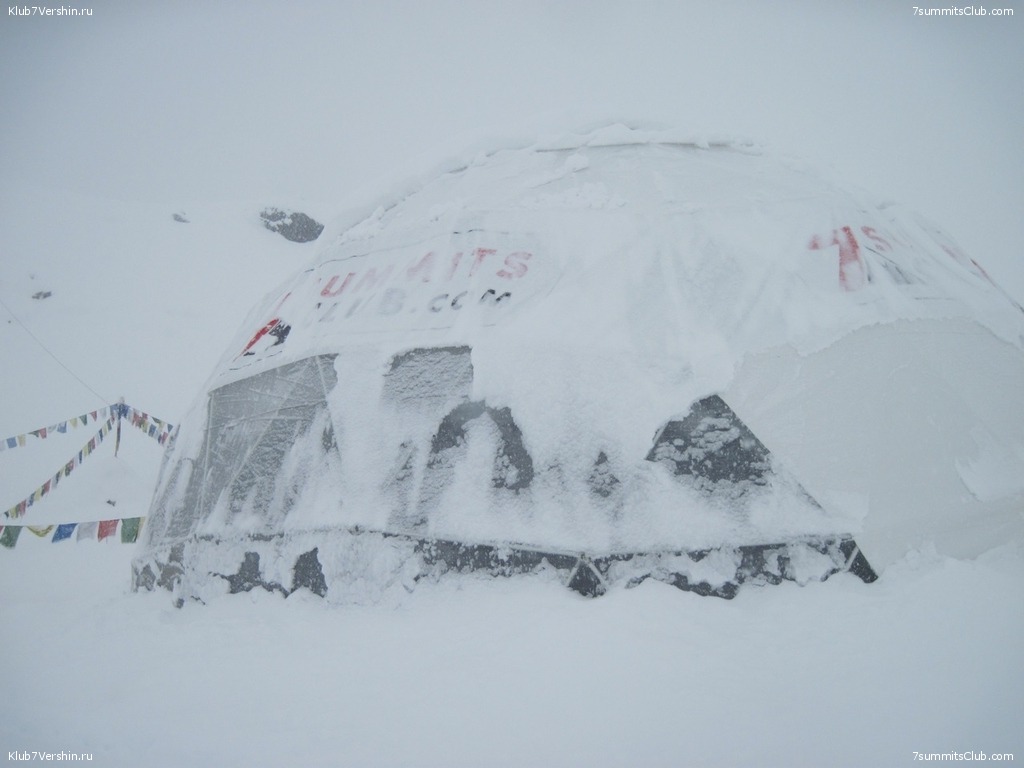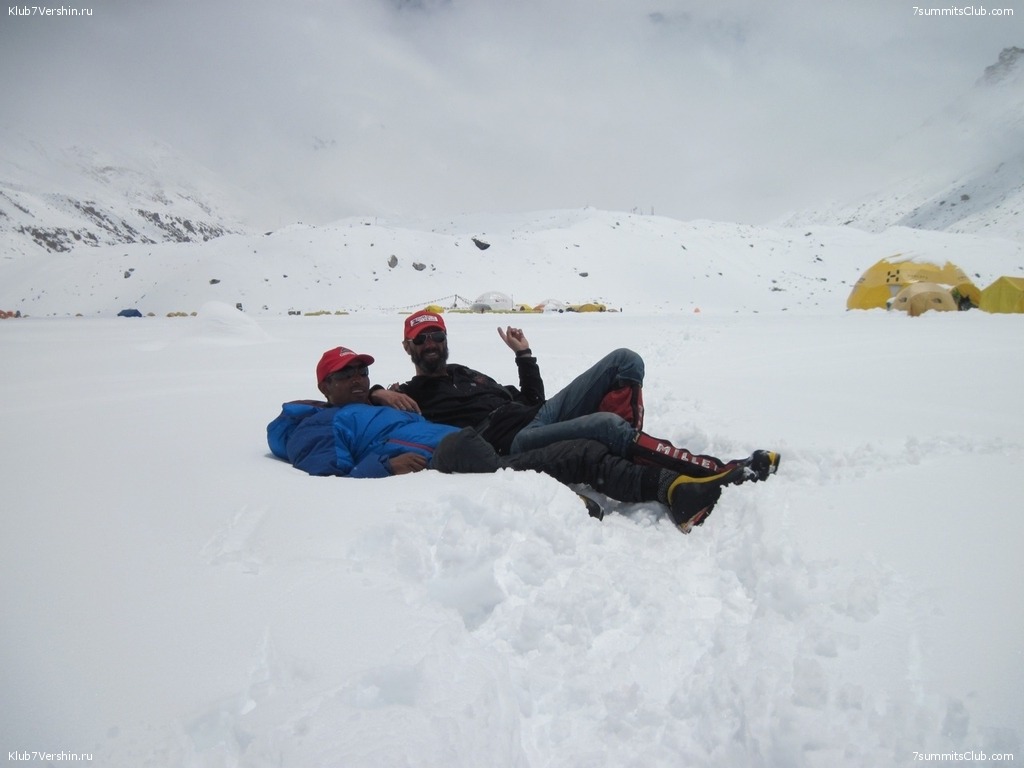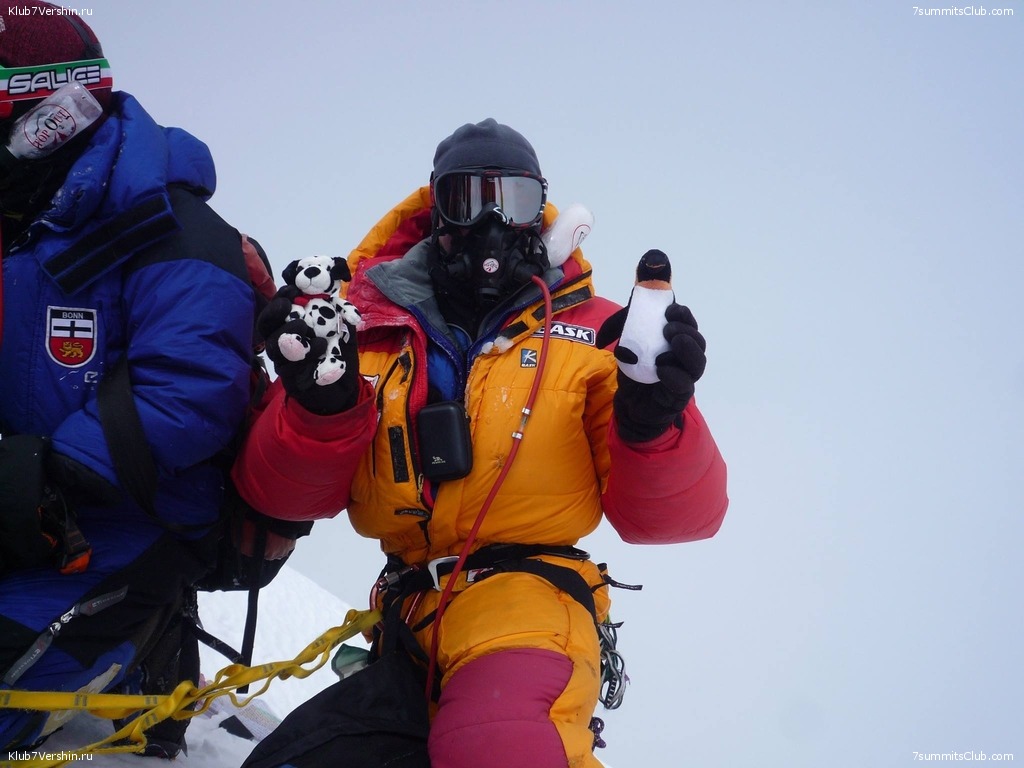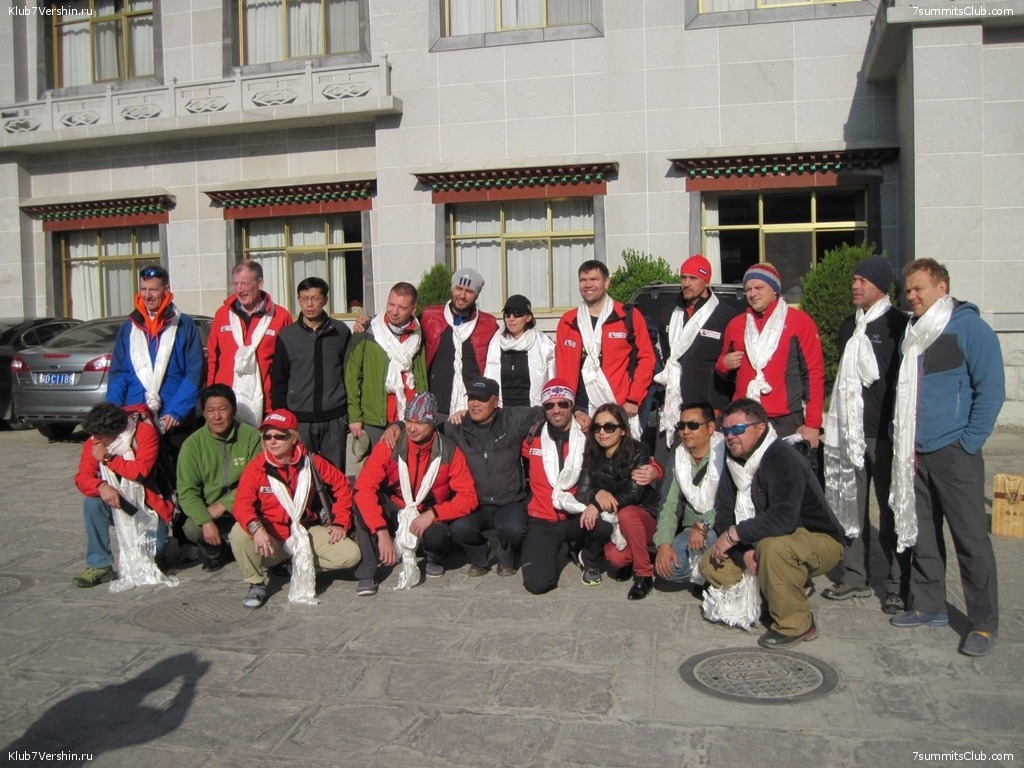All news - Page 268
Our first ascent of Lesser Ararat
Ararat.
Turkish authorities opened for climbing Lesser Ararat. Turkish - it Kucuk Agri. And here are the first news from there, from 7 Summits Club! Our small group went to the top of the Lesser Ararat (elevation 3927m) and is preparing to go to ...
Turkish authorities opened for climbing Lesser Ararat. Turkish - it Kucuk Agri. And here are the first news from there, from 7 Summits Club! Our small group went to the top of the Lesser Ararat (elevation 3927m) and is preparing to go to the Great Ararat (5165m).
SUMMIT. Vladimir Kotlyar's group climbed Mount Elbrus during bad weather
Elbrus.
Hi, everybody! It is Vladimir Kotlyar, an Elbrus Climb programme, from the South. Today we successfully ascended to the Western summit. We very long waited for a weather window which didn't come. Therefore we climbed in that weather which ...
Hi, everybody! It is Vladimir Kotlyar, an Elbrus Climb programme, from the South. Today we successfully ascended to the Western summit. We very long waited for a weather window which didn't come. Therefore we climbed in that weather which was. But everything passed successfully, smoothly, we went down all. Now we are already in Terskol, are washed, eaten off. All thanks! Good-bye!
Kilimanjaro - new group of our Club
Kilimanjaro.
August 4, two new groups of the 7 Summits Club began programs of climbing Kilimanjaro. They go on different routes - Machame and Marangu. Alexander Agueyev (Volgograd), Vasily Yanivets and Sergey Chuvilev from Moscow are on the Machame ...
August 4, two new groups of the 7 Summits Club began programs of climbing Kilimanjaro. They go on different routes - Machame and Marangu. Alexander Agueyev (Volgograd), Vasily Yanivets and Sergey Chuvilev from Moscow are on the Machame route. After the mountains, they will continue to travel and go on trips to the national parks of Tanzania.
Brothers Victor and Vladimir Yaroshenko from Moscow and Alexey Sushkov from St. Petersburg chosen Marangu route. Interestingly, that Victor and Vladimir have just returned from Elbrus, where they were preparing for the ascent to the highest peak in Africa.
Successful ascent on Belukha (Altai). Photos
July 27th a team of 18 people in full has climbed the highest peak in the Russian Altai the mount of Belukha. Three of the participants were from the 7 Summits Club. It is interesting that on the same day Edward Myslovsky, the first Soviet ...
July 27th a team of 18 people in full has climbed the highest peak in the Russian Altai the mount of Belukha. Three of the participants were from the 7 Summits Club. It is interesting that on the same day Edward Myslovsky, the first Soviet climber on Mount Everest, also climbed Belukha.
"Many thanks for organizing the trip" - Anton.
Denis Provalov tells about of a traverse of Elbrus from south to north.
Elbrus.
Hello! It is the guide of 7 Summits Club Denis Provalov. Today, our group made a successful ascent to the summit of Mount Elbrus West Peak and 11 people descended on the northern side of this beautiful mountain. Heavy enough route, despite ...
Hello! It is the guide of 7 Summits Club Denis Provalov. Today, our group made a successful ascent to the summit of Mount Elbrus West Peak and 11 people descended on the northern side of this beautiful mountain. Heavy enough route, despite the fact that the weather was just awesome: sunny, no wind. In the morning, probably at four or five it was still cool, and then it was warm, wonderful. The result - 11 people descended on the north side, and three of our team - down to the start point, to the south. We are all very happy. We are now located in a shelter in the North. All in a good mood. Tomorrow we continue the descent toward civilization, toward the town of Kislovodsk. We hope tomorrow to get out as early as 8 am and be at 12 hours on the next camp on the north side..
A Group of Vladimir Kotlyar made a traverse of two peaks of Elbrus
Elbrus.
Good evening! It says Vladimir Kotlyar, guide of 7 Summits Club, climbing Elbrus, traverse. Our group has successfully climbed Mount Elbrus West Peak and passed traverse from the south side of the eastern peak. We are now in Kislovodsk, ...
Good evening! It says Vladimir Kotlyar, guide of 7 Summits Club, climbing Elbrus, traverse. Our group has successfully climbed Mount Elbrus West Peak and passed traverse from the south side of the eastern peak. We are now in Kislovodsk, where is the successful completion of the program. Thank you for your attention! Goodbye!
SUMMIT!!! We climbed the mount of Belukha
Today at 8 am local time, Ilya Slutsky and Bulat Stolyarov have climbed the highest point of Altai mountains - the mount of Belukha (4506).We heartily congratulate the climbers!
Today at 8 am local time, Ilya Slutsky and Bulat Stolyarov have climbed the highest point of Altai mountains - the mount of Belukha (4506).
We heartily congratulate the climbers!
Anna Abramova from Elbrus: only good news
Elbrus.
Yesterday a group of Vladimir Kotlyar made acclimatization outing to the Pastukhov Rocks. Some active participants headed by Vladimir descended by snowboard. And today, the group is on the mountain, hoping that climbing will ...
Yesterday a group of Vladimir Kotlyar made acclimatization outing to the Pastukhov Rocks. Some active participants headed by Vladimir descended by snowboard.
And today, the group is on the mountain, hoping that climbing will be successful. The weather is good. And more good news for those, who is going to us: on the Liprus Refuge is repaired toilet!!! Hurray!!
That's it! So who else thought to go or not - now just have to put Elbrus on plans !
Waiting for news from the top!
SUMMIT! The group of Vladimir Kotlyar has climbed Mount Elbrus
Elbrus.
Today our group (all members) has reched the top of Mount Elbrus. The weather was quite good. The climbers managed to edscent down the valley. Now they are in Terskol, in the Povorot Hotel preparing for sauna and victory celebration. ...
Today our group (all members) has reched the top of Mount Elbrus. The weather was quite good. The climbers managed to edscent down the valley. Now they are in Terskol, in the Povorot Hotel preparing for sauna and victory celebration. Good job!
Our Mt. Elbrus programmes
http://7summits-club.com/programs/all/region_3/country_169/object_5/
Summit! Opening season on Mont Blanc
The first our group reached the summit of Mont Blanc with our leader well-known skyrunner Artem Rostovtsev. It was beginning of our Alpen season. We expect to send several group in Europa to climb Mont Blanc, Monte Rosa and some other ...
The first our group reached the summit of Mont Blanc with our leader well-known skyrunner Artem Rostovtsev. It was beginning of our Alpen season. We expect to send several group in Europa to climb Mont Blanc, Monte Rosa and some other peaks.
Traditional Party of 7 Summits Club. Great success ! Valery Babanov was our main guest
It was may be the best our meeting. Despite not convenient time, many our friends came to meet our Everest Team, to see the greatest Russian climber Valery Babanov who lives now in Canada and Chamonix. He was our main speaker, main ...
It was may be the best our meeting. Despite not convenient time, many our friends came to meet our Everest Team, to see the greatest Russian climber Valery Babanov who lives now in Canada and Chamonix. He was our main speaker, main attraction. But we just joy all atmosphere of the party. So many beautiful people! Great time for talking and for making nice pictures.
We arranged an auction where an ice ax Babanov was sold for 100,000 rubles
SUMMIT! Vladimir Kotlyar: Climb of Mount Elbrus was successful
Elbrus.
Vladimir Kotlyar transmits from the slopes of Mount Elbrus. Today we climbed to the top of Western Peak of Mount. We started at 2 am from a shelter on foot, without any snowcat. And we got to the top in eight half hours. Now we have a ...
Vladimir Kotlyar transmits from the slopes of Mount Elbrus. Today we climbed to the top of Western Peak of Mount. We started at 2 am from a shelter on foot, without any snowcat. And we got to the top in eight half hours. Now we have a deserved rest in our alpine hotel (Leaprus). Tomorrow we plan to go down in Terskol to celebrate this momentous event. Everyone, thank you for your attention!
SUMMIT! We congratulate our climbers on Ararat from our BLITZ group!
Ararat.
On the Russia Day holiday (from 12 to 15 June), the group of 7 Summits Club of 8 people attempted to climb Mount Ararat by our program BLITZ. Initially it was heavy task but lots of snow made it more difficult. Too early yet, summer ...
On the Russia Day holiday (from 12 to 15 June), the group of 7 Summits Club of 8 people attempted to climb Mount Ararat by our program BLITZ. Initially it was heavy task but lots of snow made it more difficult. Too early yet, summer came only recently. Climbers had to start from a height of 3800 m, not from 4100 m as usual. However, six of the eight members of group achieved the summit of Ararat. Well done! Congratulations!
Sergei Dudko and Dmitry Krasnov completed the program 7 summits. Congratulations!
McKinley.
Sergei Dudko and Dmitry Krasnov, few days ago, have climbed the highest point in North America - Mount McKinley (Denali). Thus, they have successfully completed the 7 Summits project! We heartily congratulate the guys on this achievement! ...
Sergei Dudko and Dmitry Krasnov, few days ago, have climbed the highest point in North America - Mount McKinley (Denali). Thus, they have successfully completed the 7 Summits project!
We heartily congratulate the guys on this achievement!
It should be noted that the harsh Alaskan mountains had given the guys a hard time. Almost a week they were forced to wait in Talkeetna for Flight glacier because of the prolonged bad weather. But when they still managed to be on the Kahiltna Glacier, guys rushed up and in record time. For 7 days the literally ran up to the top.
We are waiting for heroes on 7 Summit Club evening of June 26, where we presented them with honorary diplomas. We invite all to listen to their story of the project completion of the 7 Summits.
Left to right: Dmitry Krasnov, Sergei Dudko, Maxut Zhumaev (went solo McKinley) and Vladimir Doronin.
SUMMIT of Mount Elbrus! The first ascent of this summer
Elbrus.
Guide 7 Summits Club Alexandra Sak reports: Hi! June 11 at 9:30 am, we were standing on the top of Mount Elbrus. The Gigant was in surprisingly good mood - probably the first such day since the beginning of the season: clear, bright moon, ...
Guide 7 Summits Club Alexandra Sak reports:
Hi! June 11 at 9:30 am, we were standing on the top of Mount Elbrus. The Gigant was in surprisingly good mood - probably the first such day since the beginning of the season: clear, bright moon, the stars, the beautiful sunrise, almost no wind. There is too much snow, but we managed. And as soon as we went down again all sucked. I'm Writing now from Leaprus refuge - outside we can not see anything, strong winds and snowing again. Overall, we were very fortunate that slipped. Can congratulate us :)
5 people were in the team:
Gulnara Talipova;
Andrei Polyakov with her daughter;
Alexei Kolesnikov;
Charles Nuzum (USA).
SUMMIT. The group of Dima Ermakov had reached the top of Mount Kilimanjaro
Kilimanjaro.
Seven Summits, hello! This is Dima Ermakov from Tanzania. Today, we all climbed Mount Kilimanjaro. The weather was beautiful, now we're going down. Everything is fine. Particularly it pleased that all this happened in my son's birthday. ...
Seven Summits, hello! This is Dima Ermakov from Tanzania. Today, we all climbed Mount Kilimanjaro. The weather was beautiful, now we're going down. Everything is fine. Particularly it pleased that all this happened in my son's birthday. What all together we are sending him our congratulations! In general, all is well with us. Hopefully tomorrow we will be at the hotel.
Group members: Philip Lerman, Irina Bykhovskaya and Mikhail Okolokulak.
Welcome to the new season at Mt. Elbrus ! With a new shelter!
Elbrus.
Our guide Sasha Sak from the slopes of Elbrus: We are at a new refuge: reached it, settled ... We had lunch today, then almost reached Pastukhov rocks, the wind prevented. Went down, waiting for dinner. In general, all good, feeling great, ...
Our guide Sasha Sak from the slopes of Elbrus: We are at a new refuge: reached it, settled ... We had lunch today, then almost reached Pastukhov rocks, the wind prevented. Went down, waiting for dinner.
In general, all good, feeling great, the mood is too great.
Tomorrow we learn to walk with crampons and ice axes, relax and wait for the weather.
NEW REFUGE
LEAPfactory places LEAPrus alpine station on russia’s highest mountain
http://www.designboom.com/architecture/leapfactory-leaprus-alpine-station-russia-06-06-2014/
The ‘s1′ eco-pod, developed by torino-based LEAPfactory, is a modular refuge structure designed specifically for extreme and remote environments. the building system is prefabricated and transported to any given location, and has been realized on many sites throughout Europe. The LEAPrus documentary takes viewers through the construction and assembly process of three shelters to create an alpine station (elevation 4,000 m) on the southern slope of mount Elbrus, located in the Caucasus range in Russia.
A trailer for the documentary: LEAPrus
http://vimeo.com/86043011
The alpine station is located at an elevation of 4,000 m on the southern side of Russia’s highest peak, mount Elbrus
The s1 shelters are able to withstand harsh weather conditions, and as a result allow adventurers to inhabit more extreme locations. Completely detached from any power grid, a photovoltaic film is incorporated into the outer shell, and is able to provide all necessary energy for the building’s equipment. The shape, materials, and construction of the units help to optimize its performance, while interior fittings provide a high level of comfort. By lifting the structures off of the terrain, minimal impact is created on the otherwise undeveloped landscape.
The last part of Everest expedition of 2014 in pictures by Alex Abramov
This season Mount Everest gave only to days for climb. We were lucky to manage to reach the top by all climbers and guides except two that got ill when acclimaizing. ...
This season Mount Everest gave only to days for climb. We were lucky to manage to reach the top by all climbers and guides except two that got ill when acclimaizing.
Our expedition is in Kathmandu: Mt. Everest Summiter List of Spring 2014
Everest.
Mt. Everest (North Side) Summiter List of Spring 2014 All our Members and Sherpas had reached the Summit of the Mt. Everest from Tibet Side! The Mt. Everest Summiter name list is :
Mt. Everest (North Side) Summiter List of Spring 2014
All our Members and Sherpas had reached the Summit of the Mt. Everest from Tibet Side!
The Mt. Everest Summiter name list is :
Alex Abramov from the North Col of Everest: all is OK, we continue our descent
Everest.
Alex report: Hello! Yesterday, May 25, our second team (all members and guides) also reached the summit of Everest. The weather was not very good. There were many people, too many. So we could not go down immediately to the camp ABC, as we ...
Alex report: Hello! Yesterday, May 25, our second team (all members and guides) also reached the summit of Everest. The weather was not very good. There were many people, too many. So we could not go down immediately to the camp ABC, as we usually do. The team spent the night at the camp an altitude of 7700 meters. Now we slowly continue to descend to ABC. We're good ... and perfectly. I will try to dictate names of summiters. First two Ladies: Iwona Zadarnowska from Poland and Natasha Matusova from Russia. Now on: Alexander Abramov , Sergey Larin , both for the sixth time, Dmitry Ermakov, Alexey Boutin ... Who else ? Igor Stolyarov, Vladimir Voronin of Ukraine, seven Sherpas and Ravil Shamgulov, a Canadian citizen. I hope no one has forgotten.
It was difficult climb, very difficult. But actually we were lucky with the weather. Because when the number of 100 people in one day started, if a hurricane or some snow, then some people would have remained on the mountain. That's right. In our expedition all climbed the top:
14 members 3 guides and 14 Sherpas.
All except those who left us after acclimatization due to illness. I mean Kostya Ugriumov and Patrick Butler from Ireland.
Now we are all on the North Col , but it is still too early to celebrate ....

